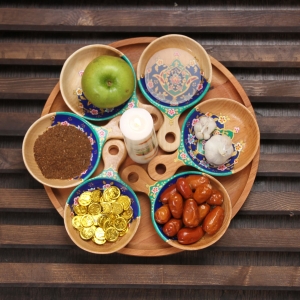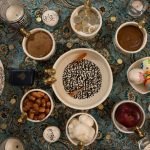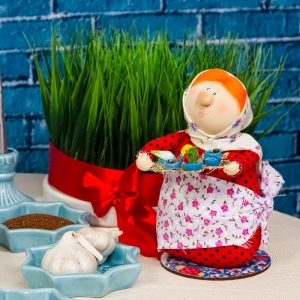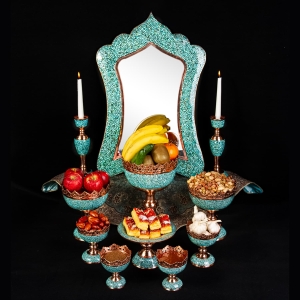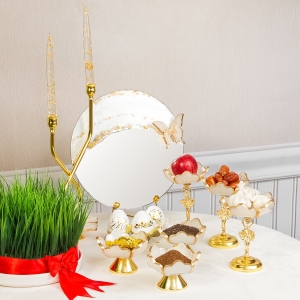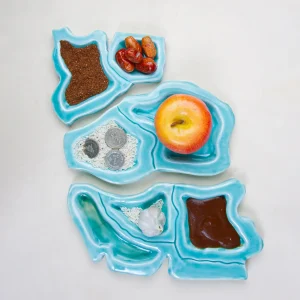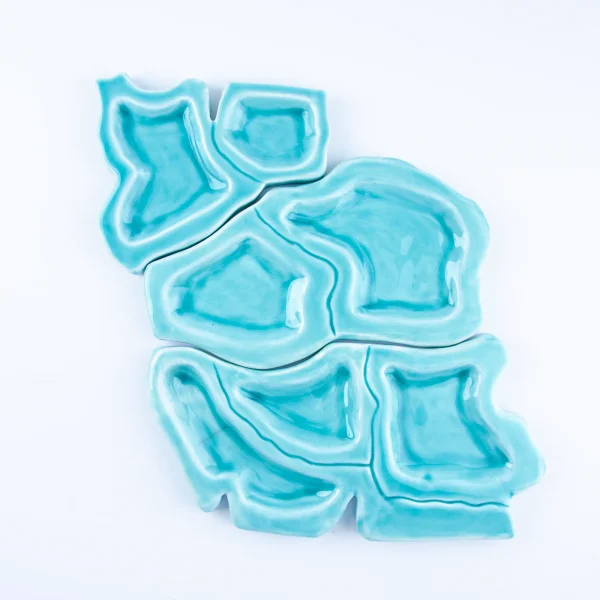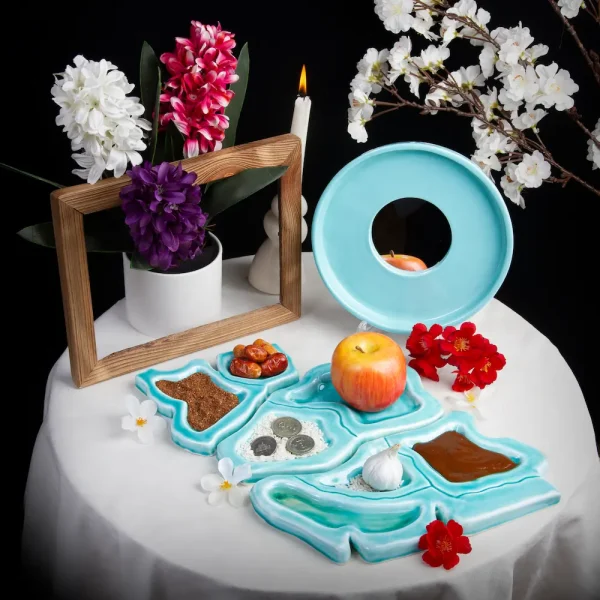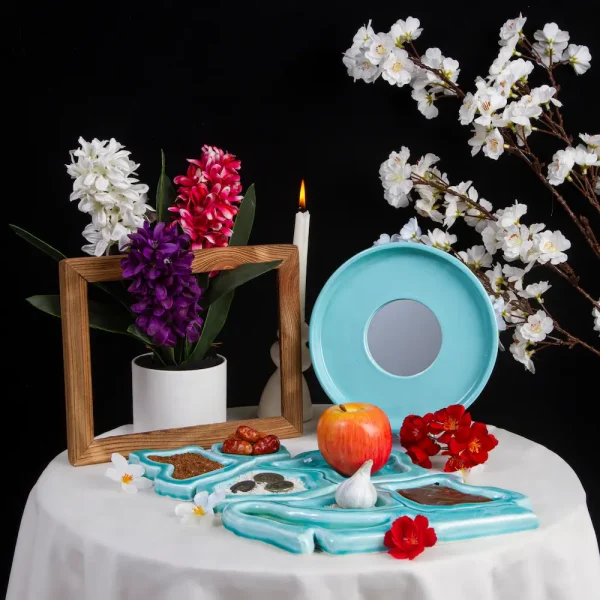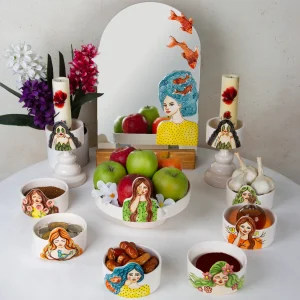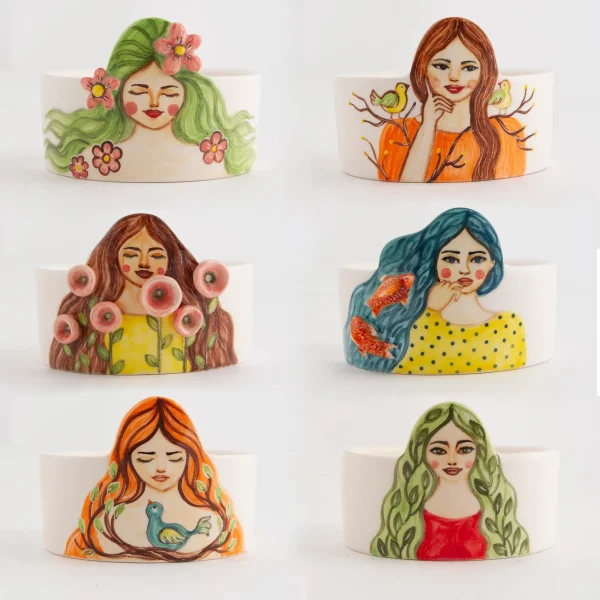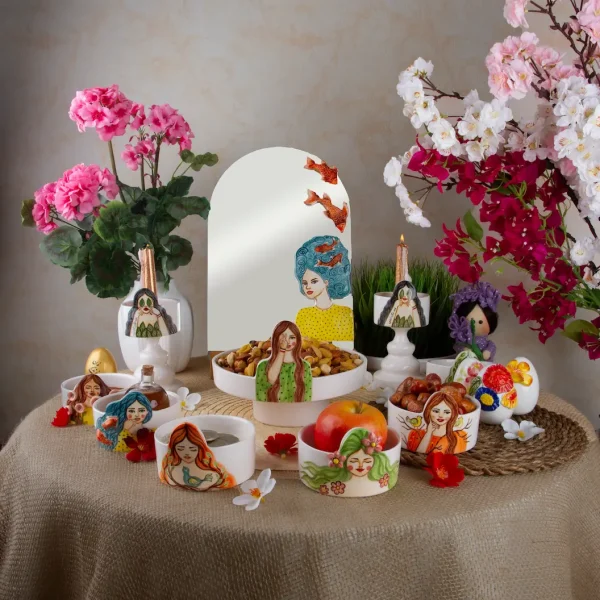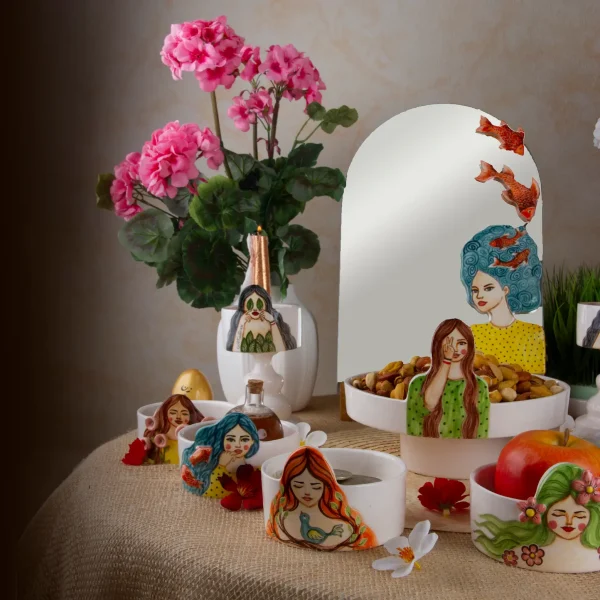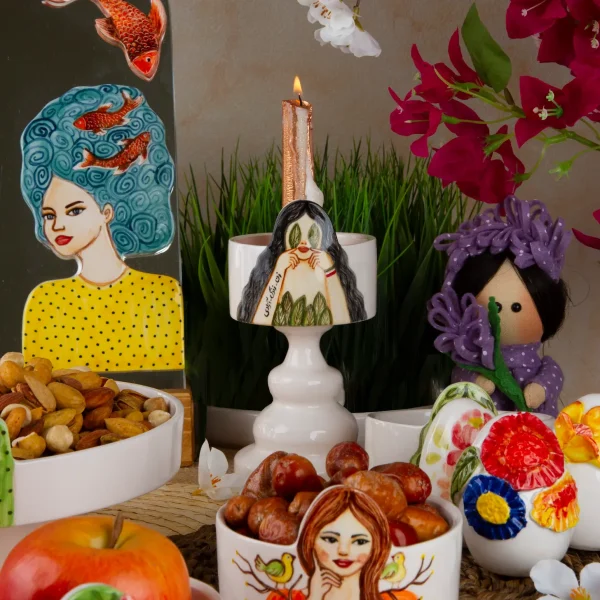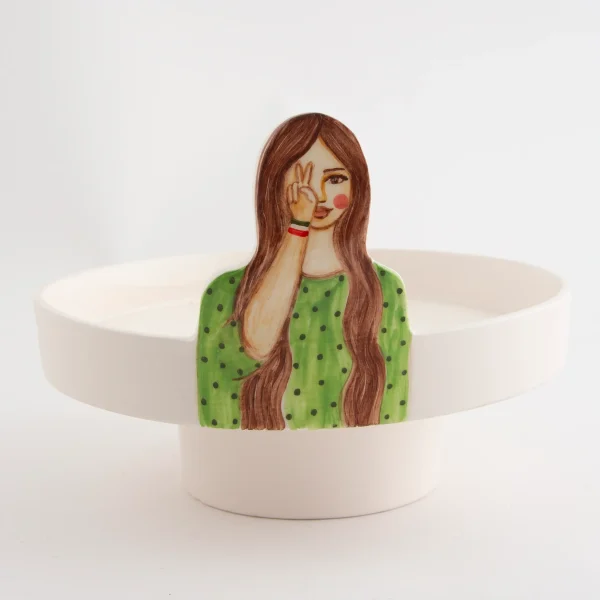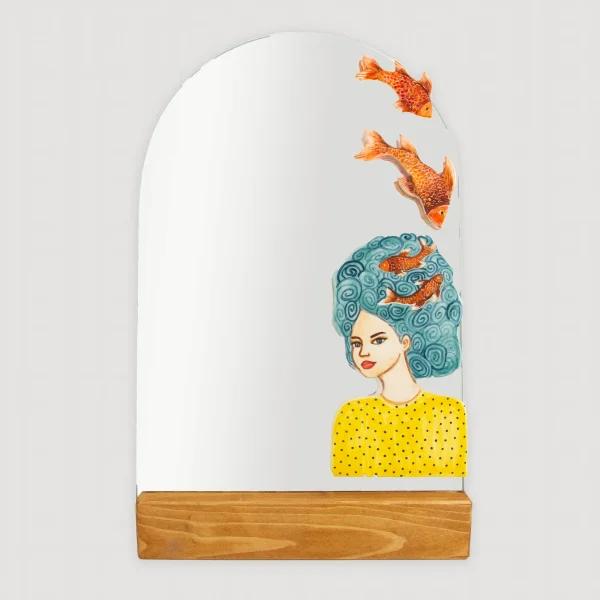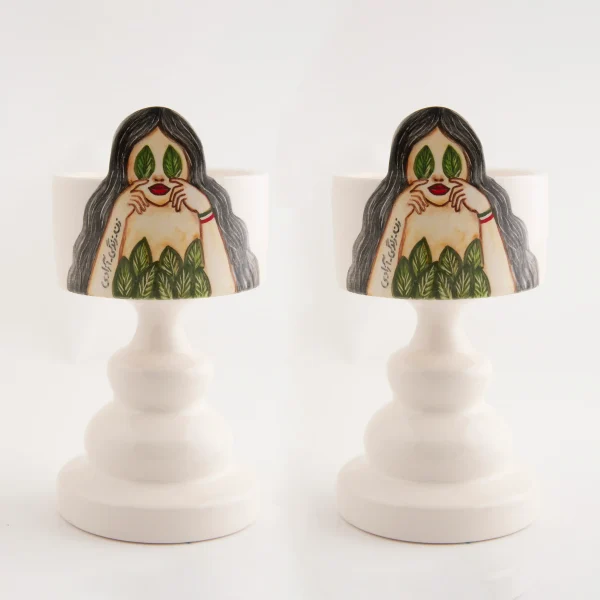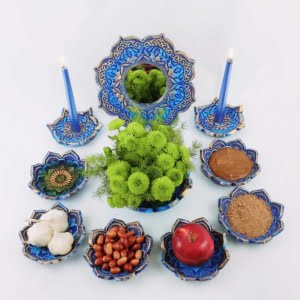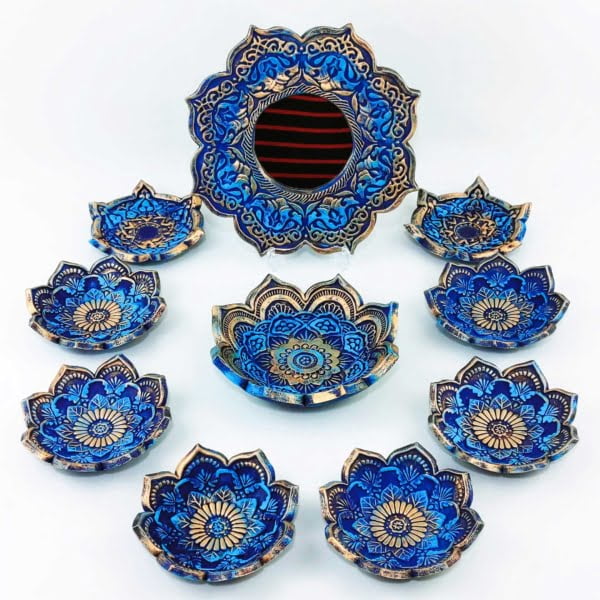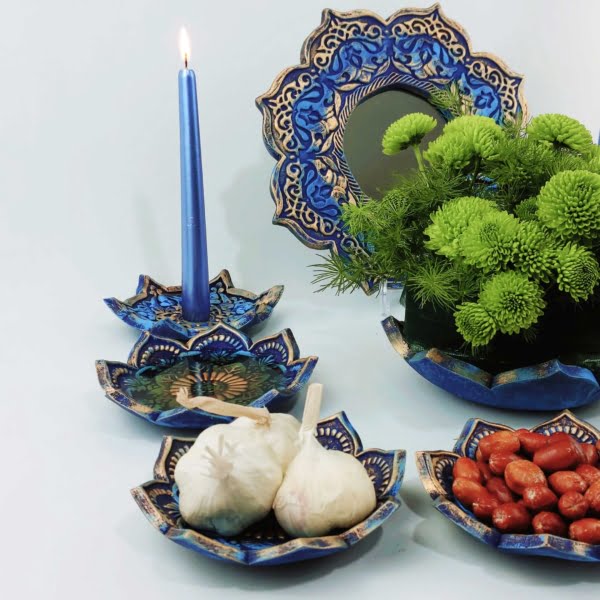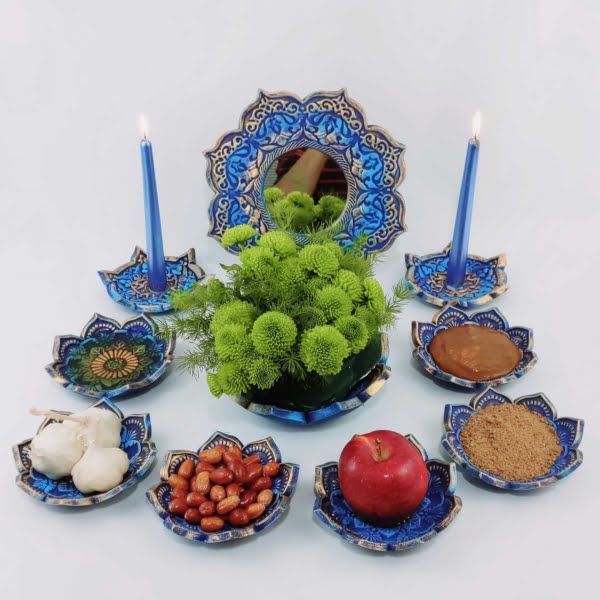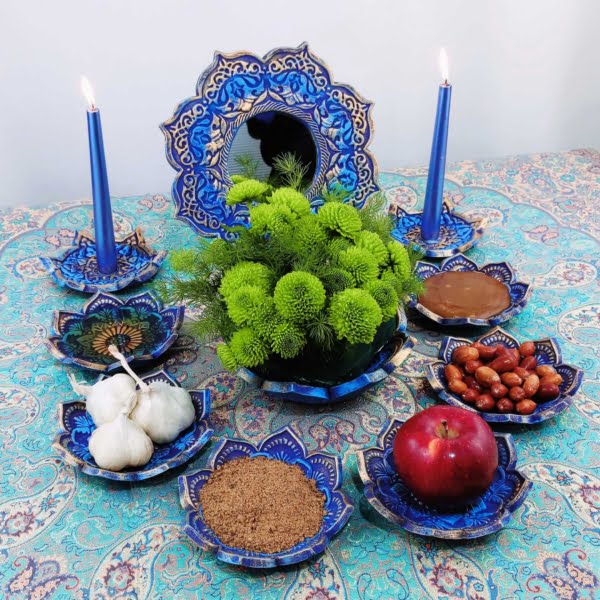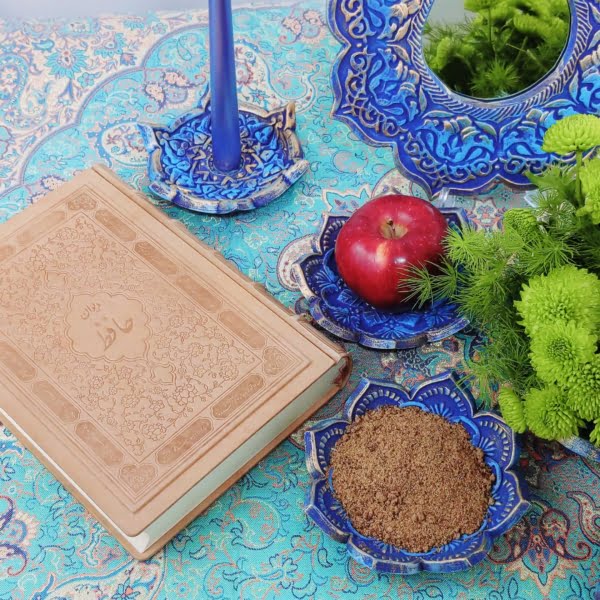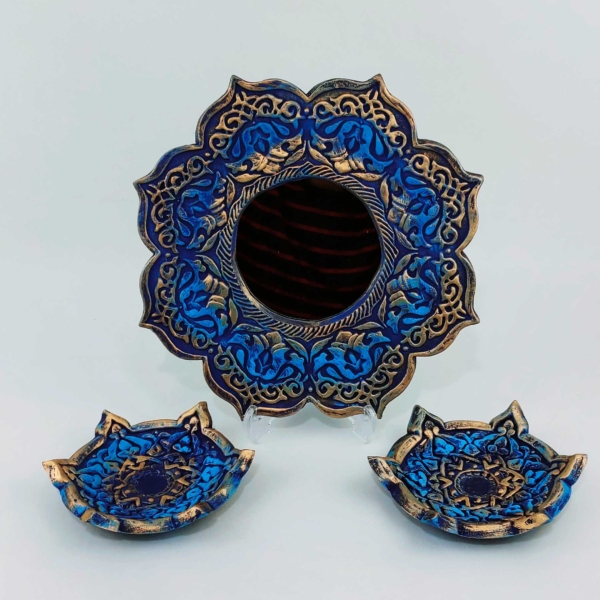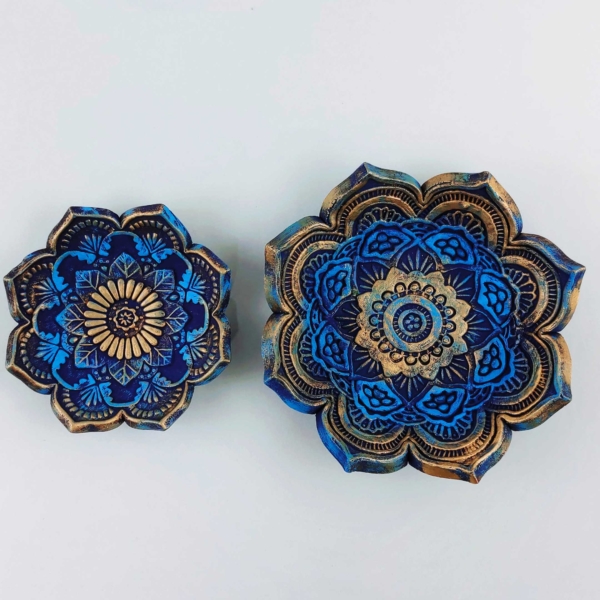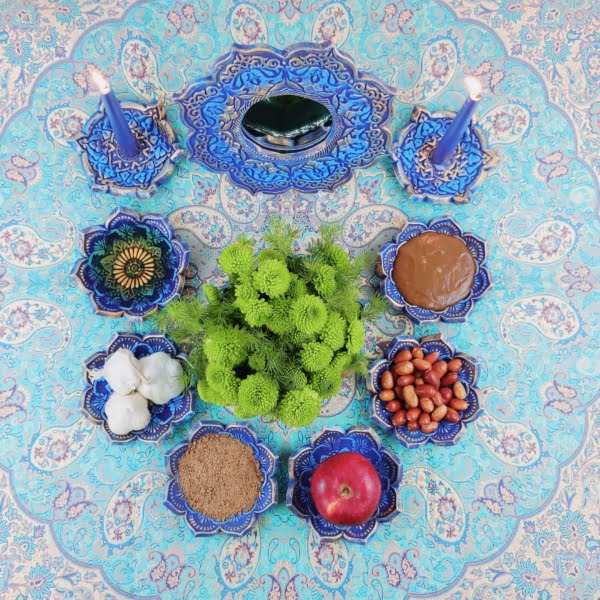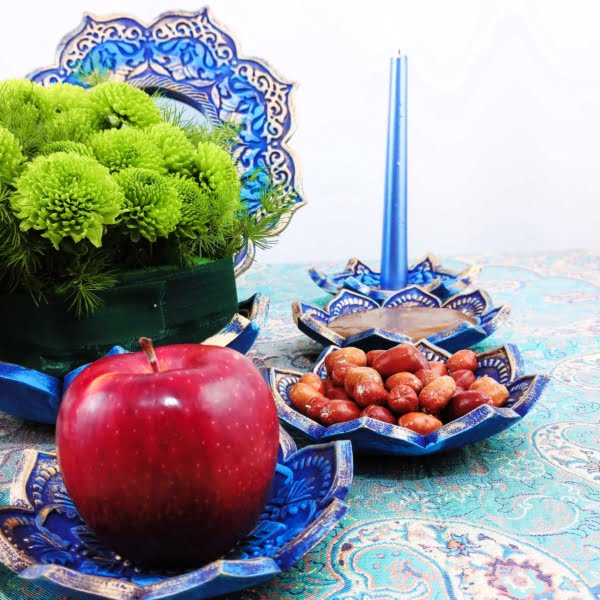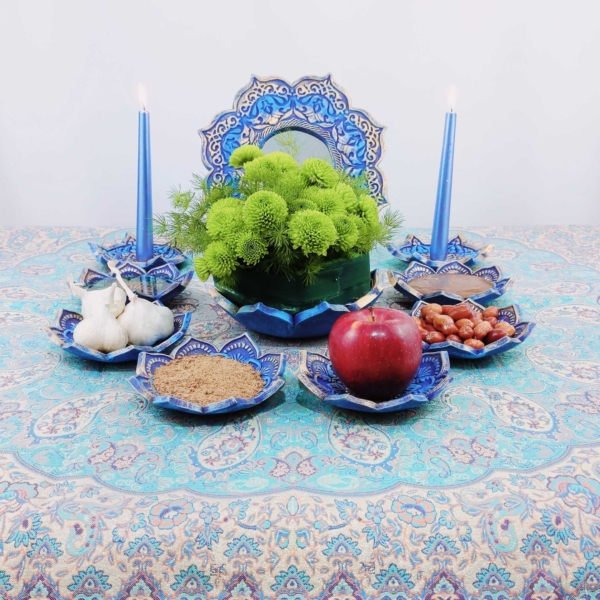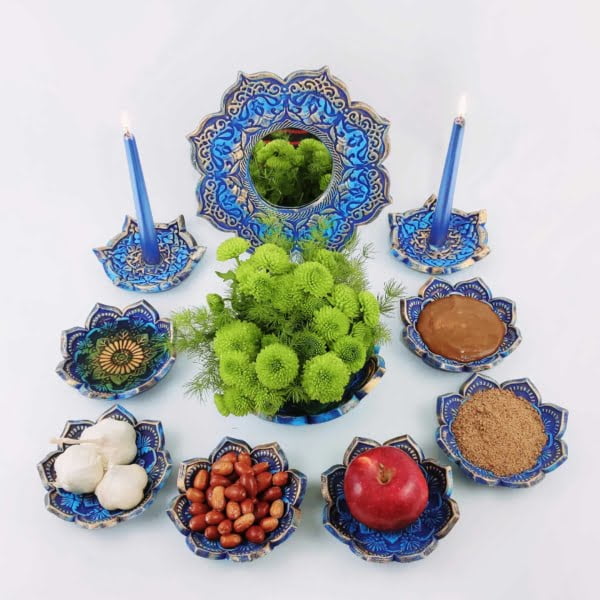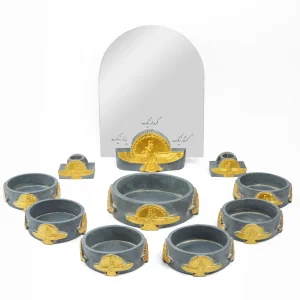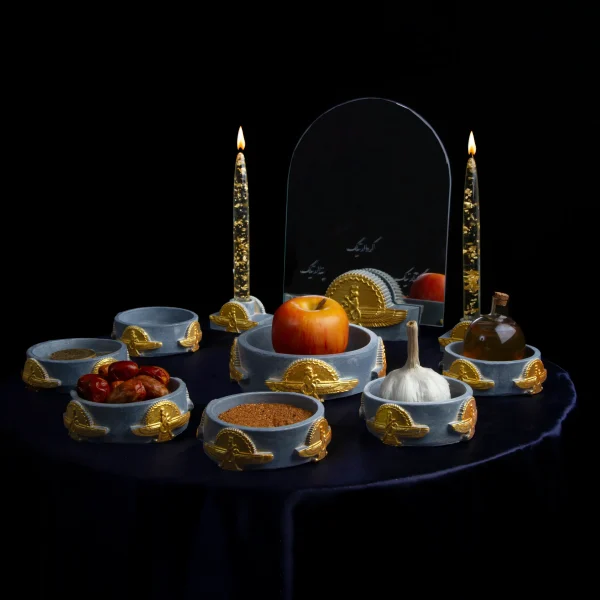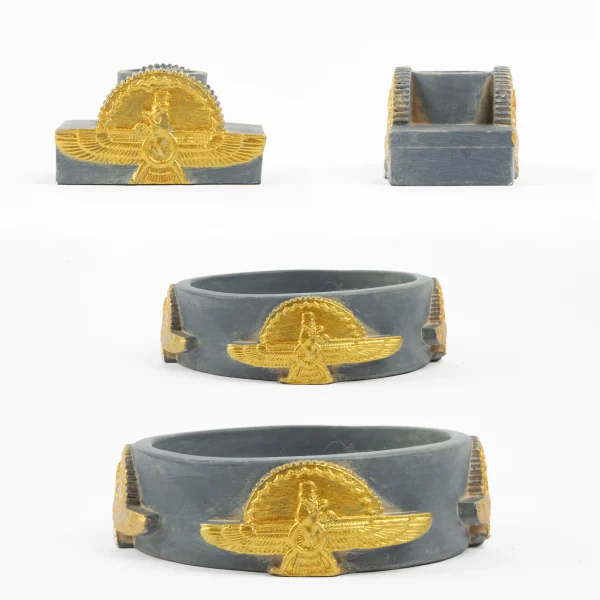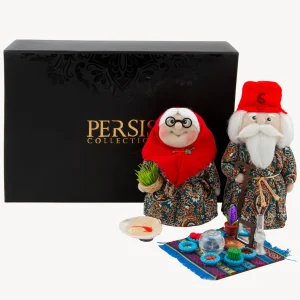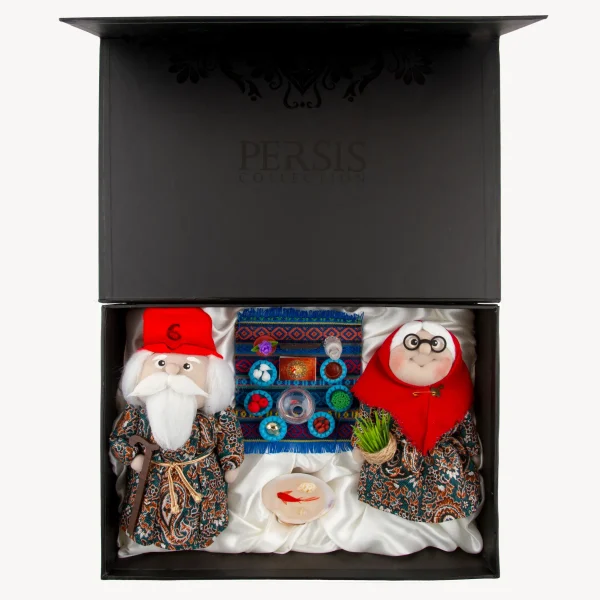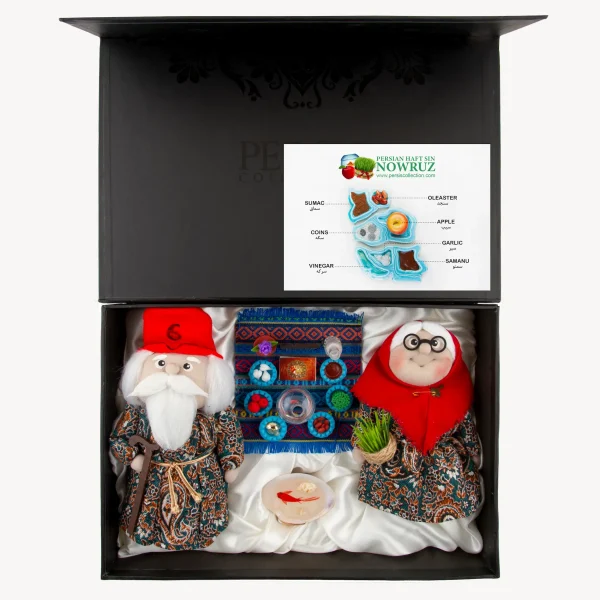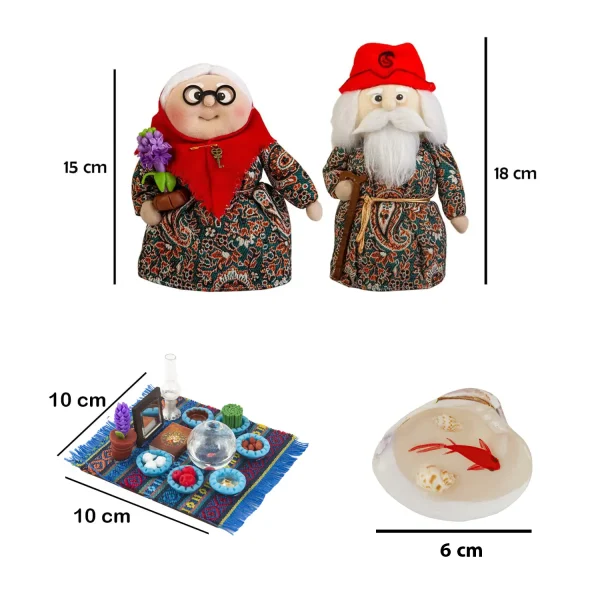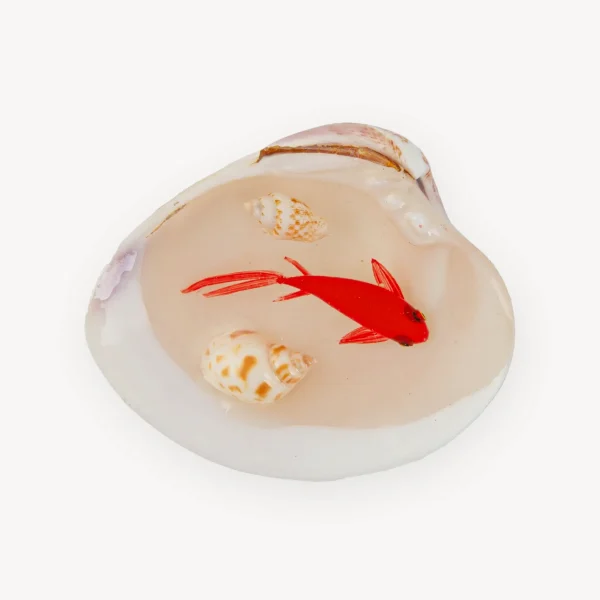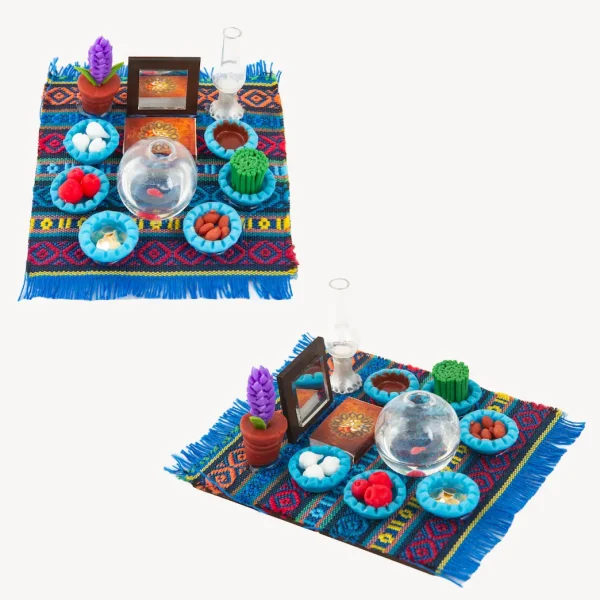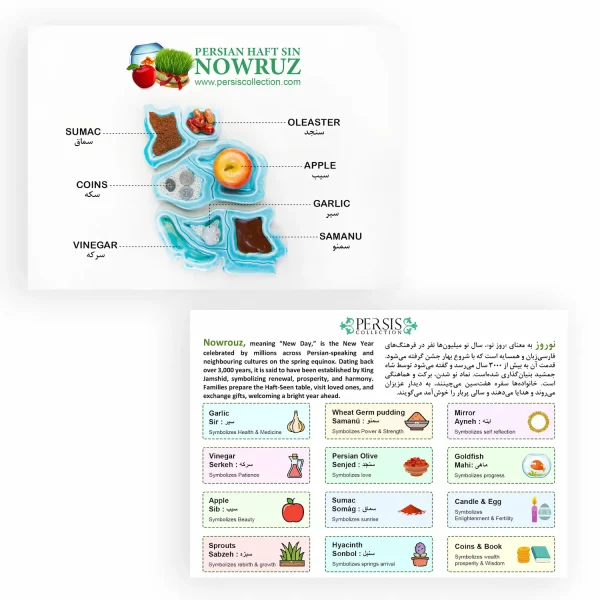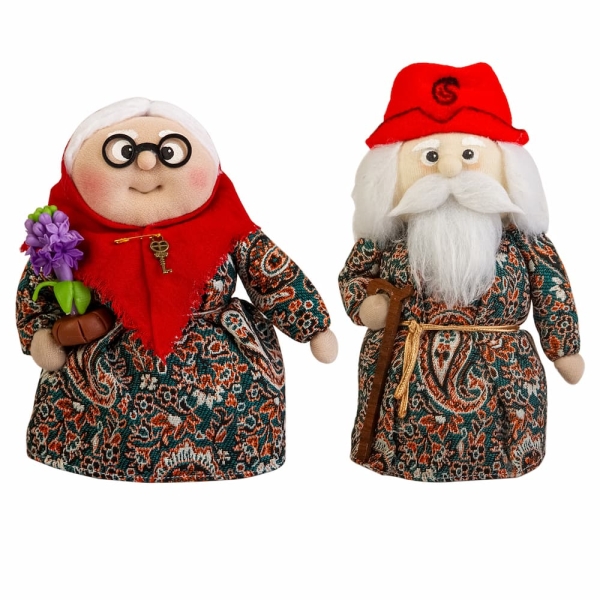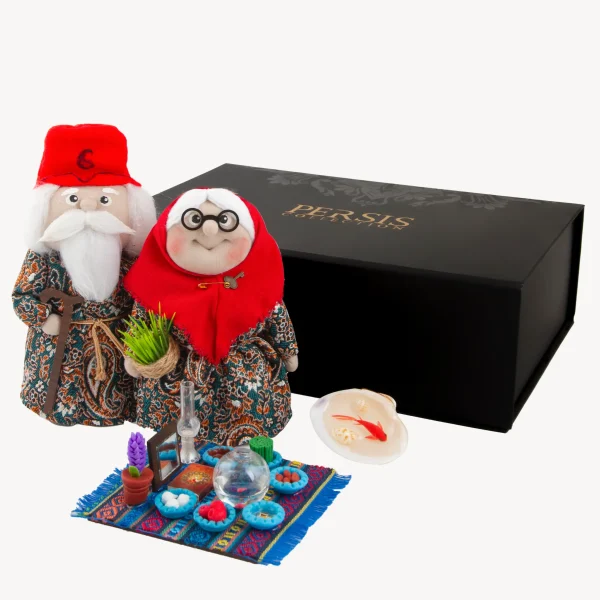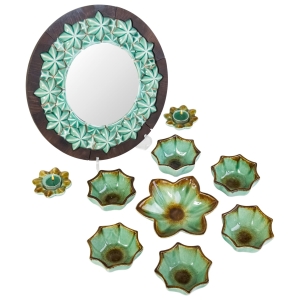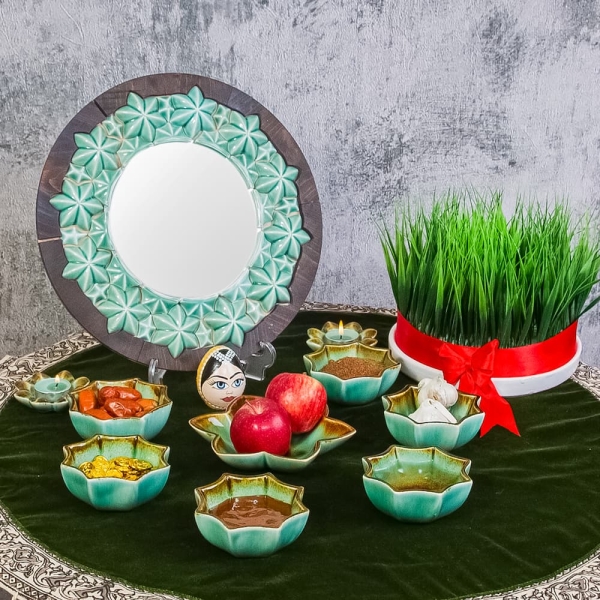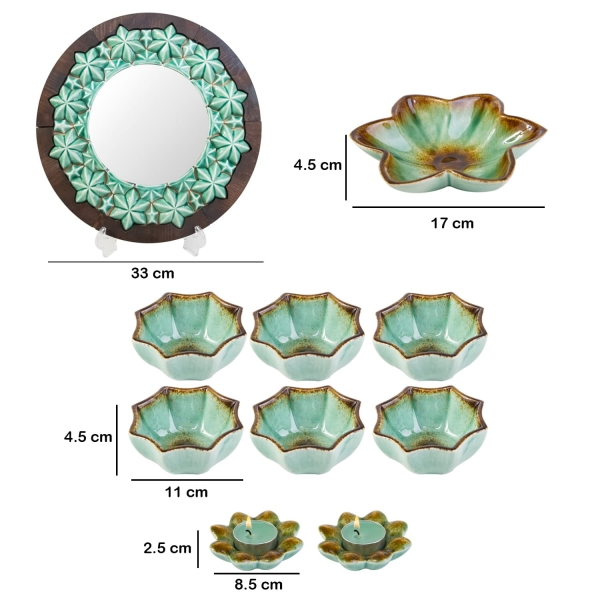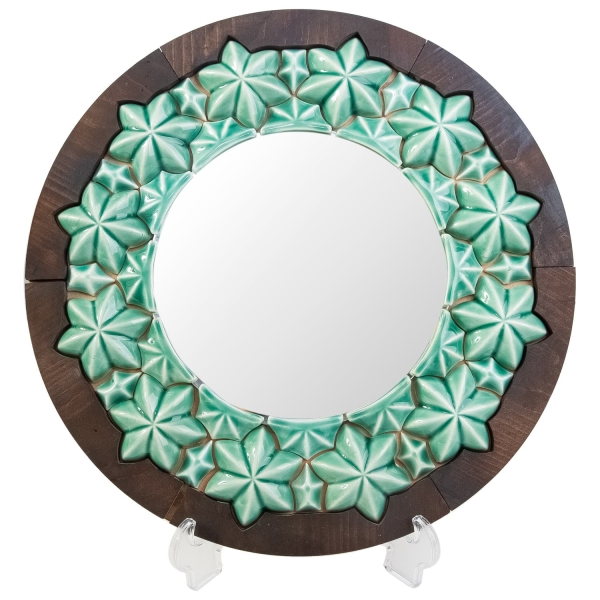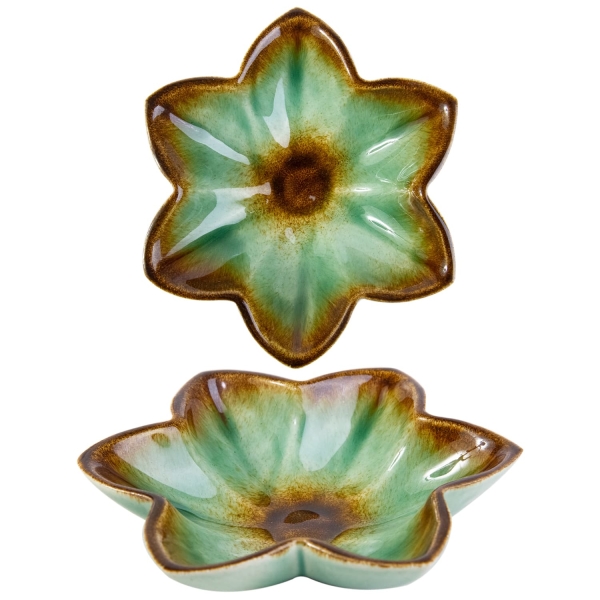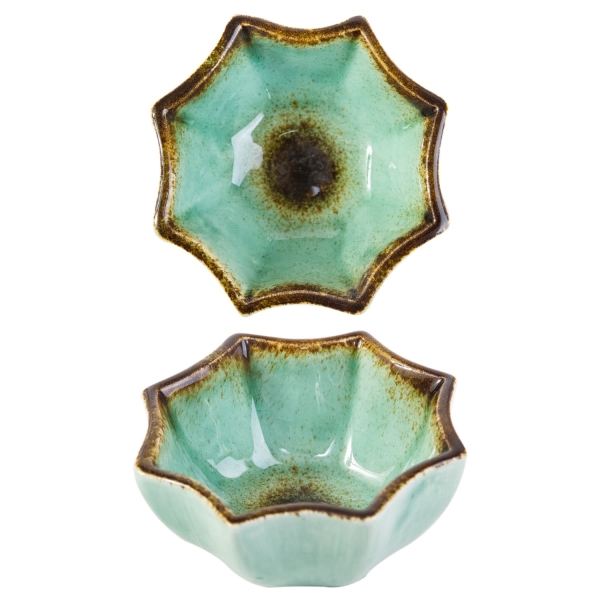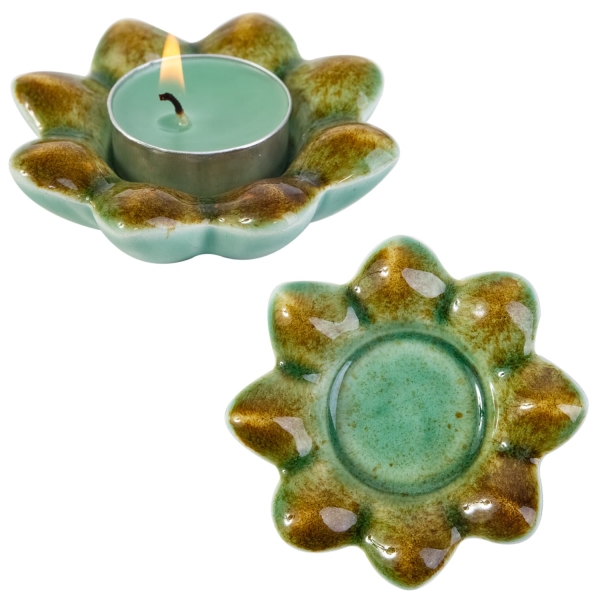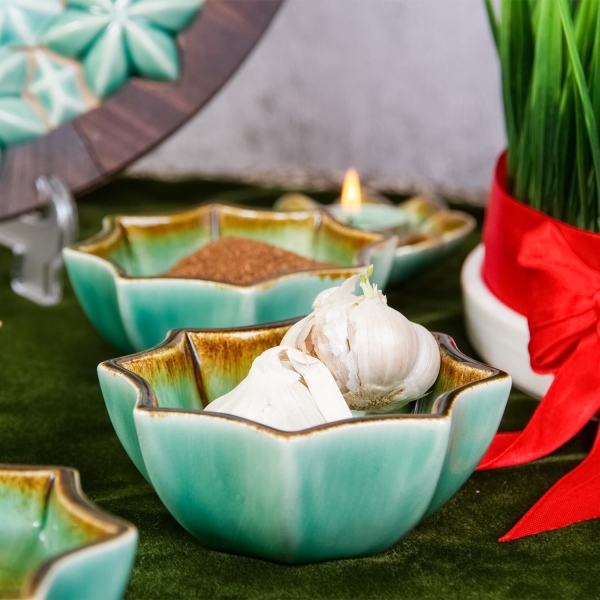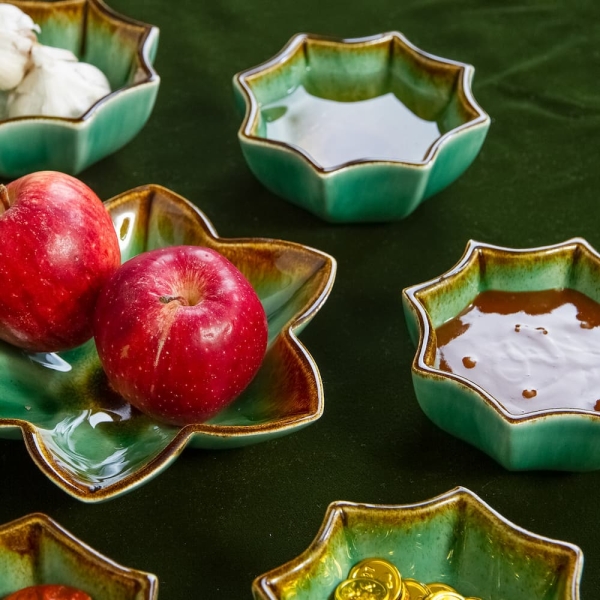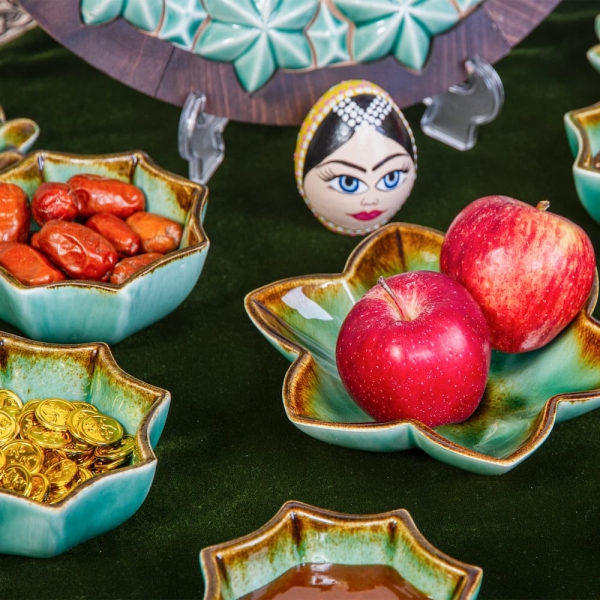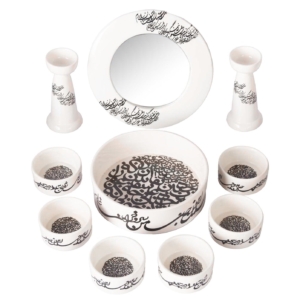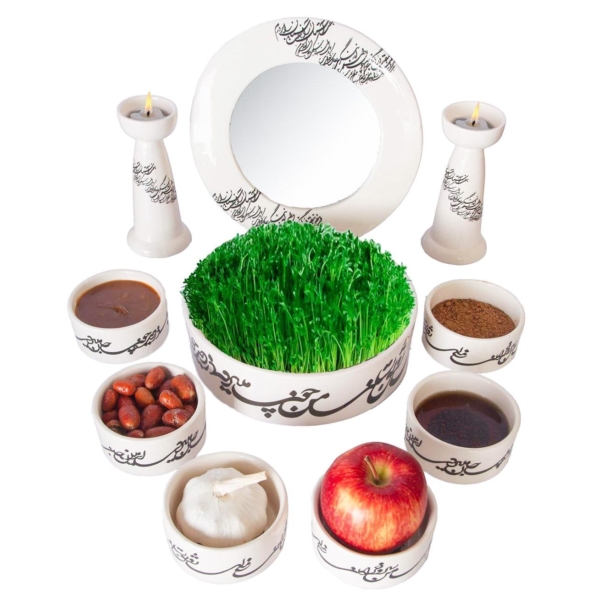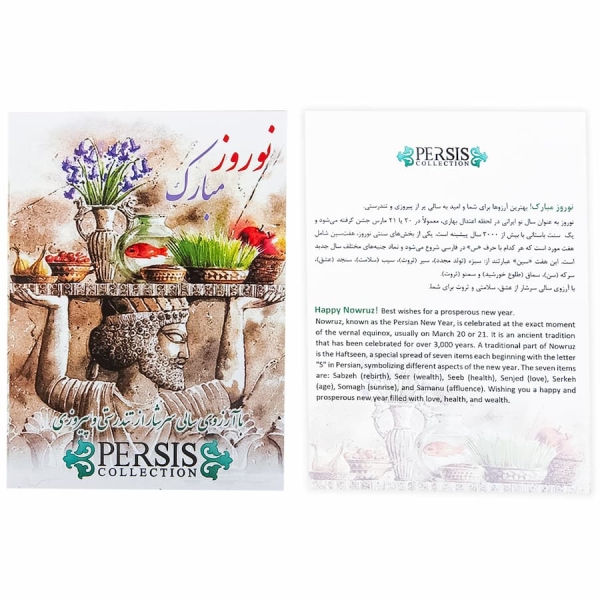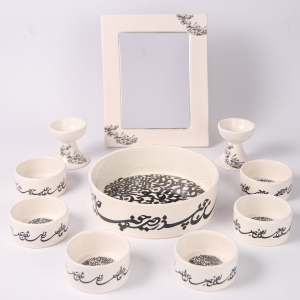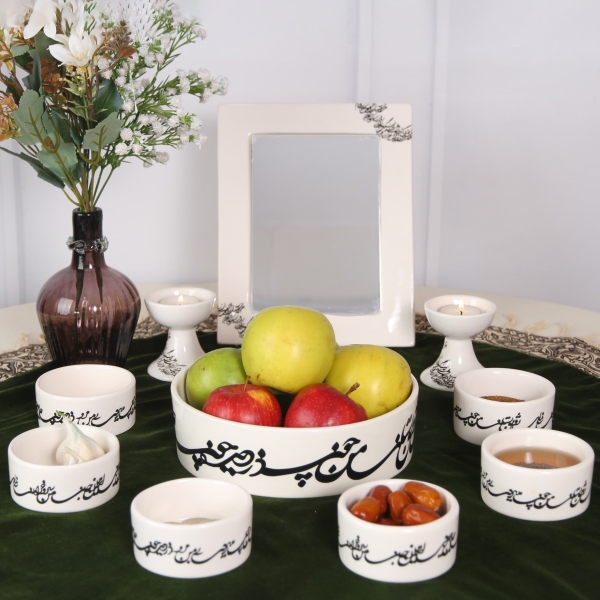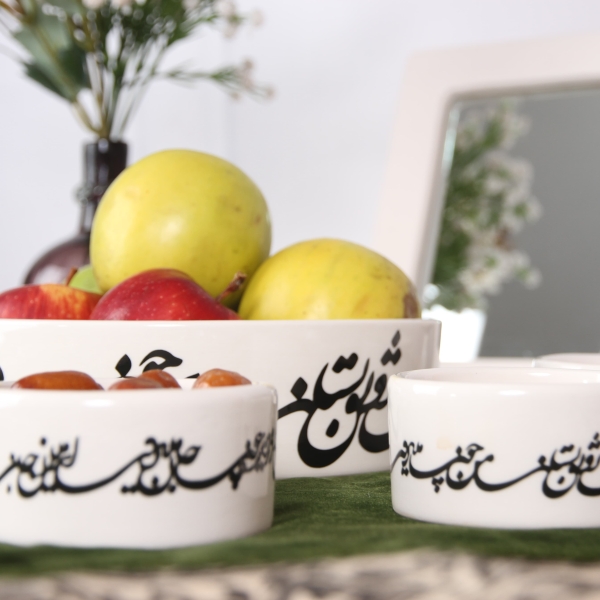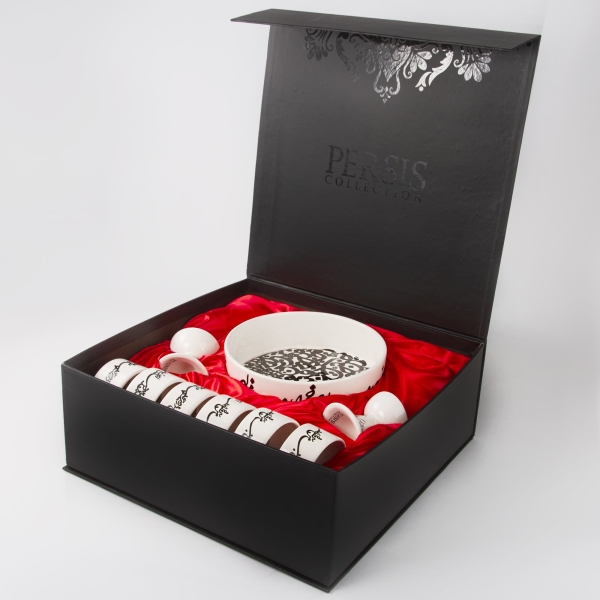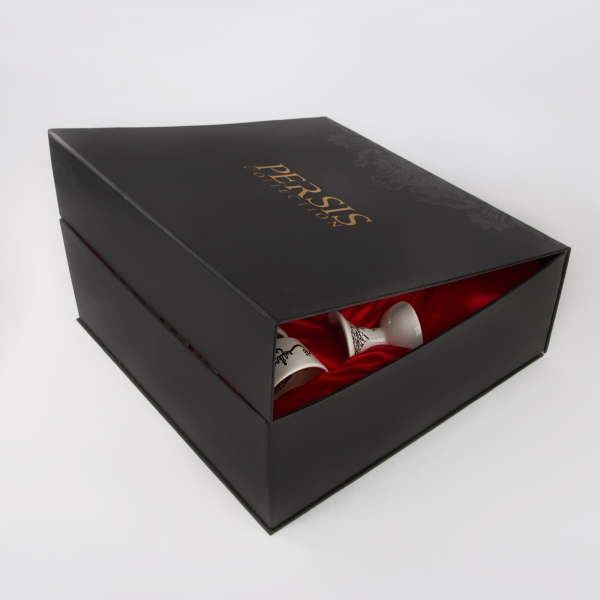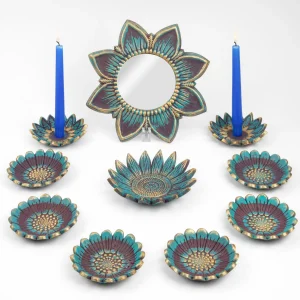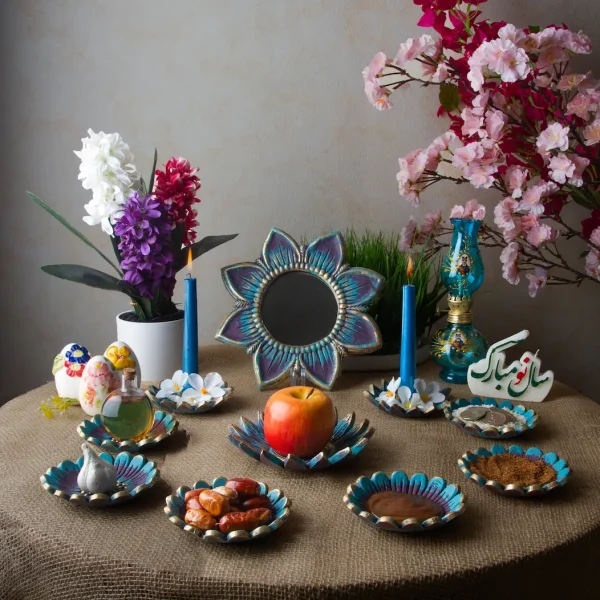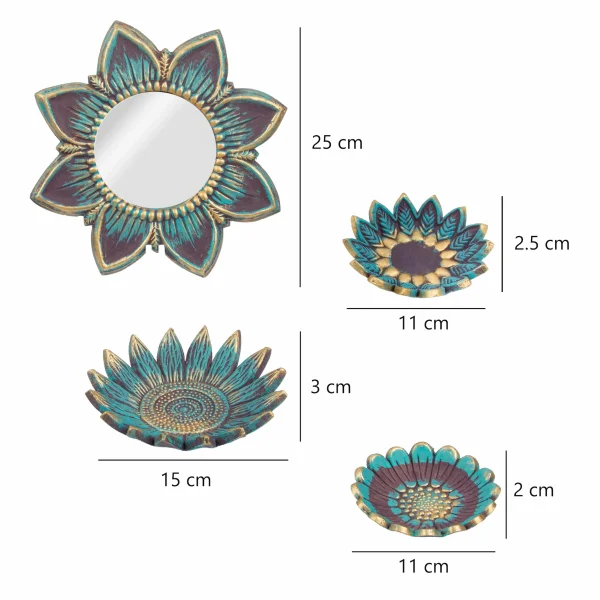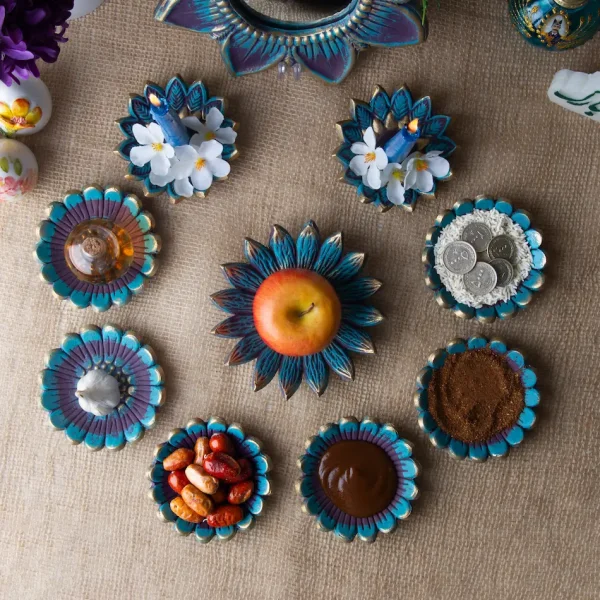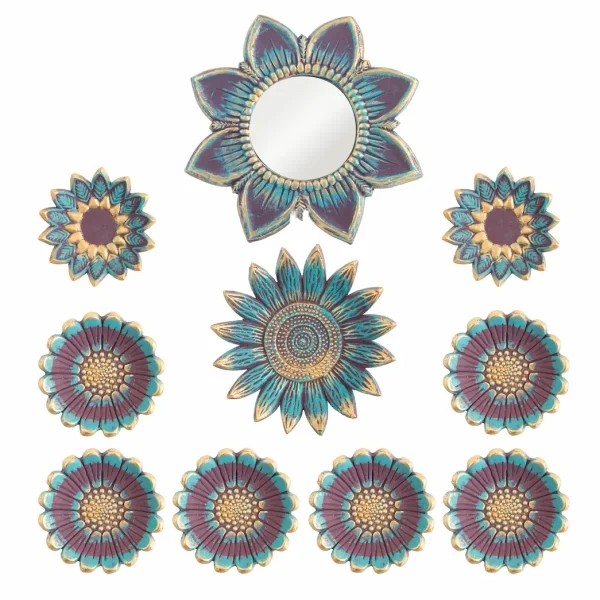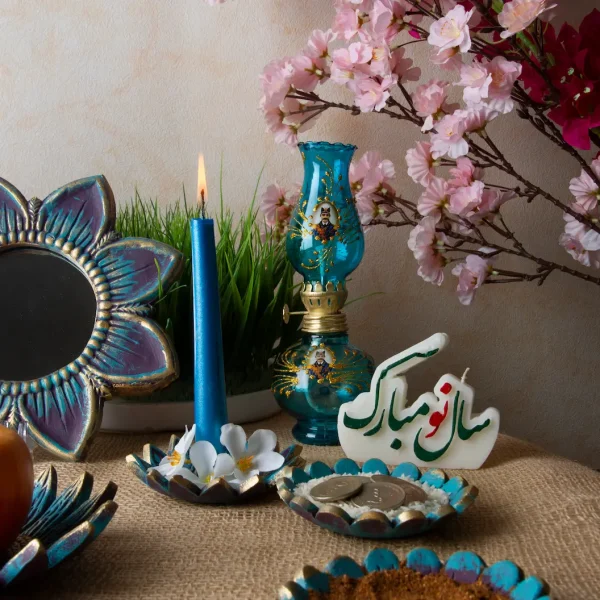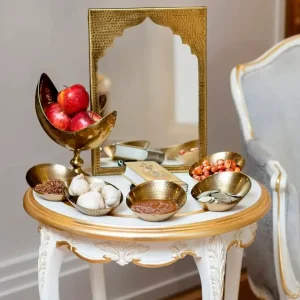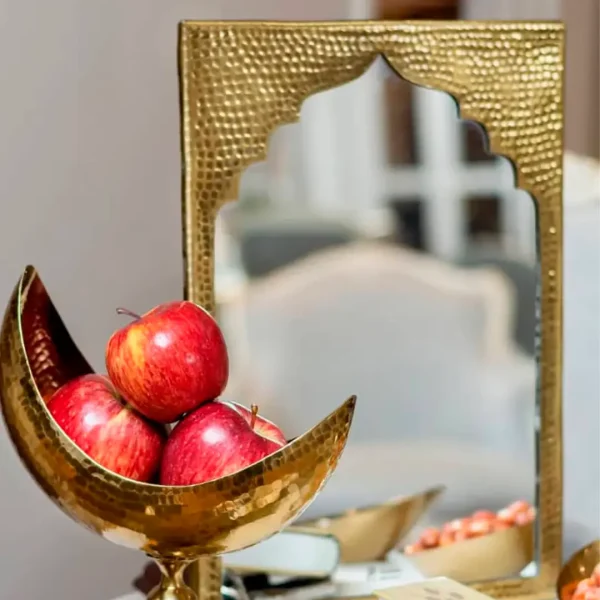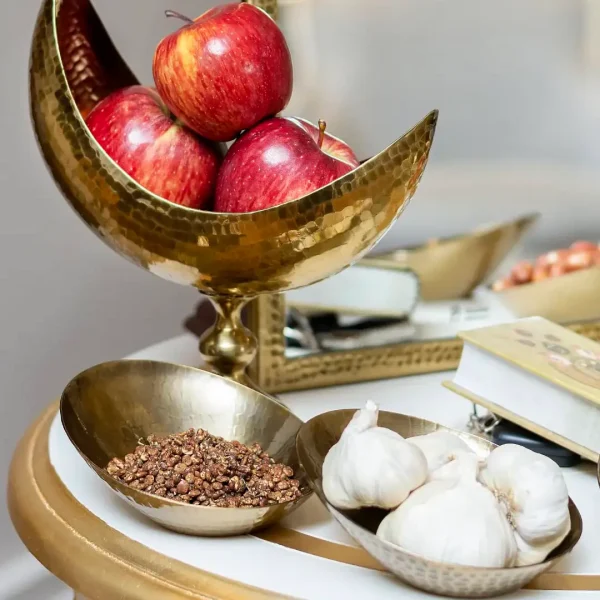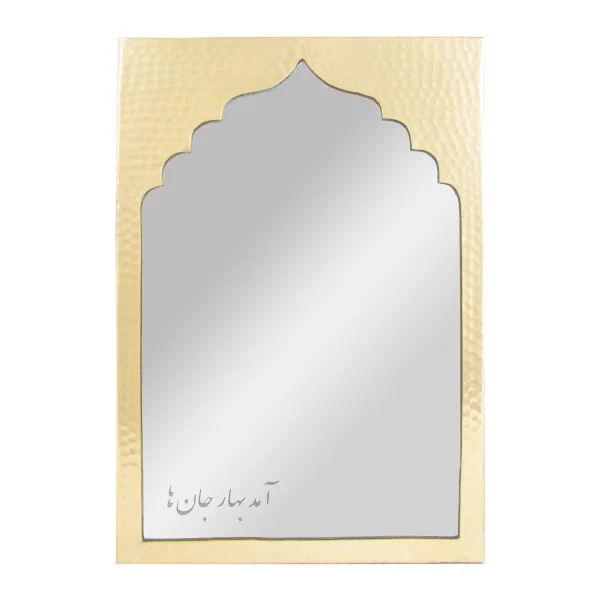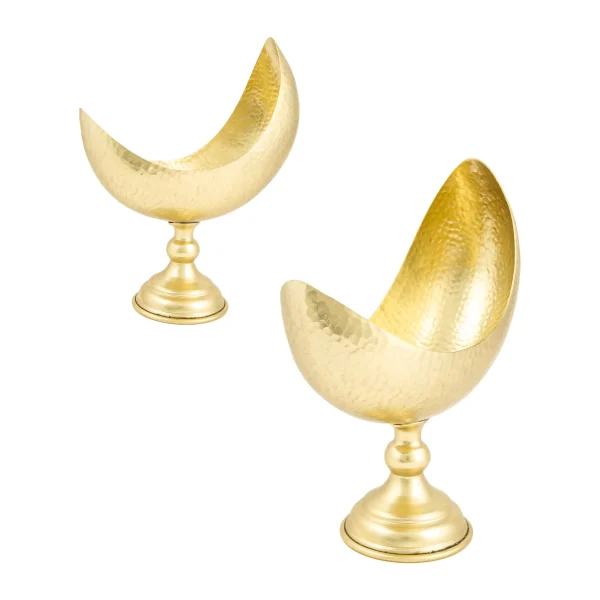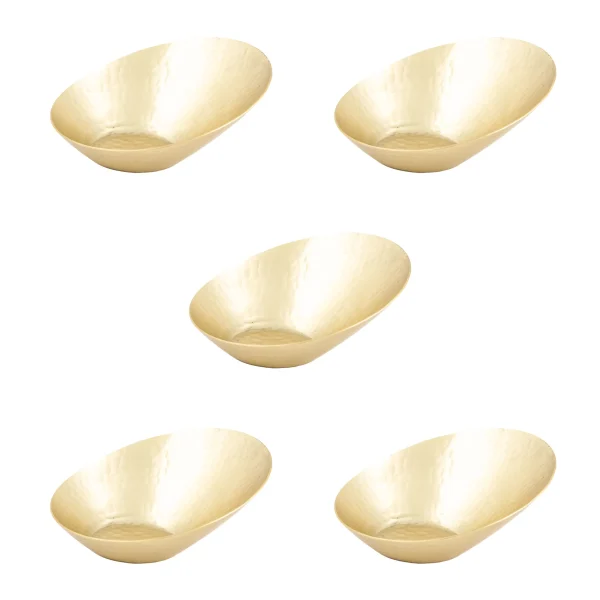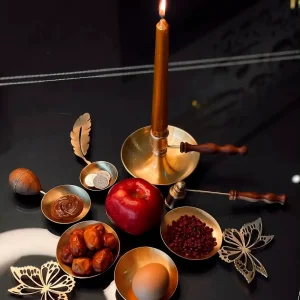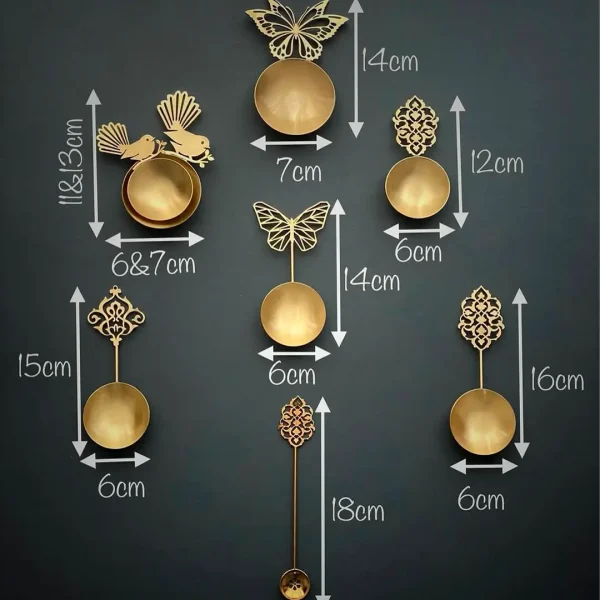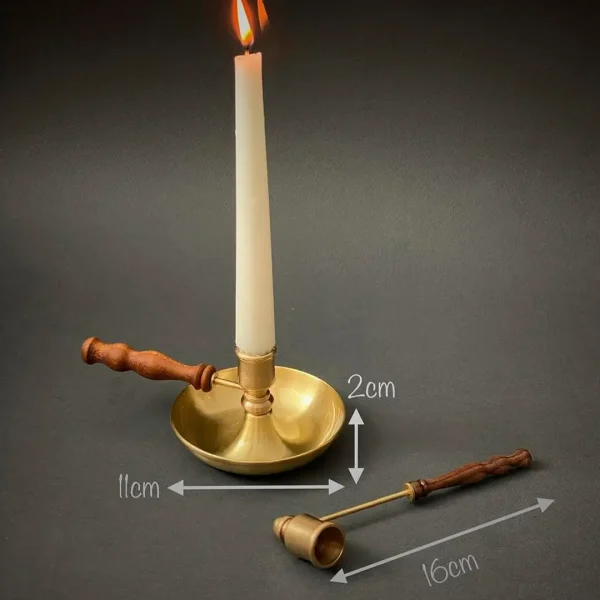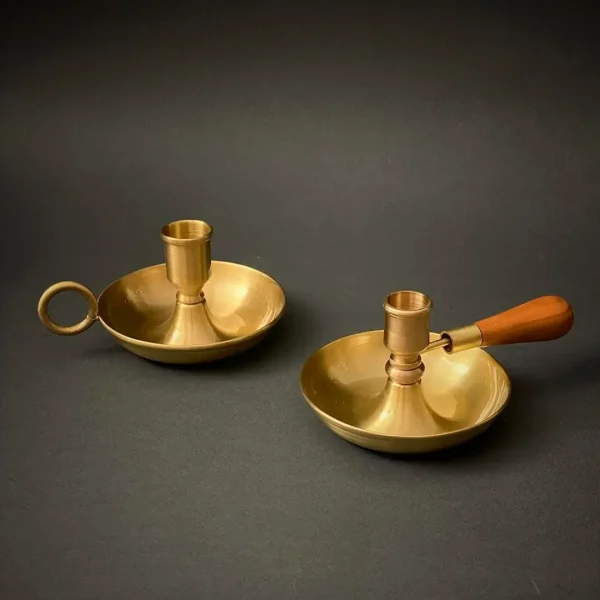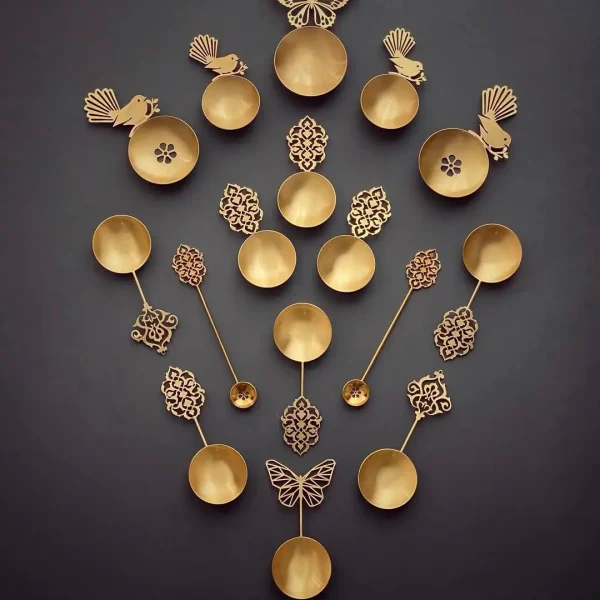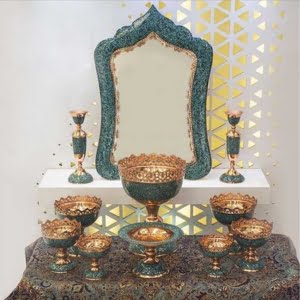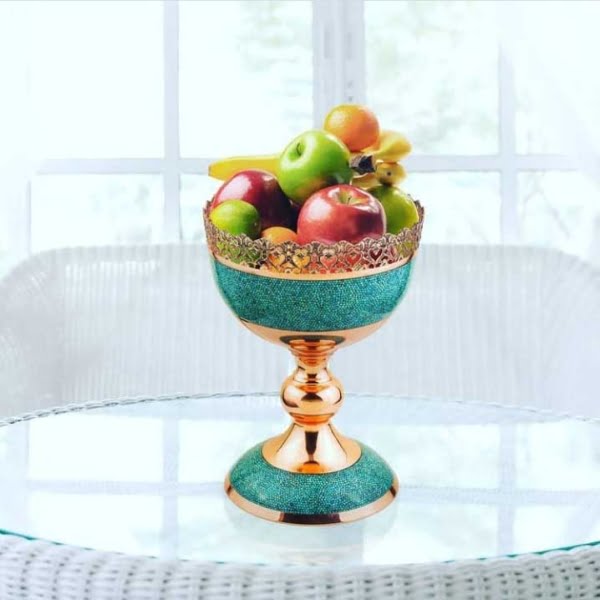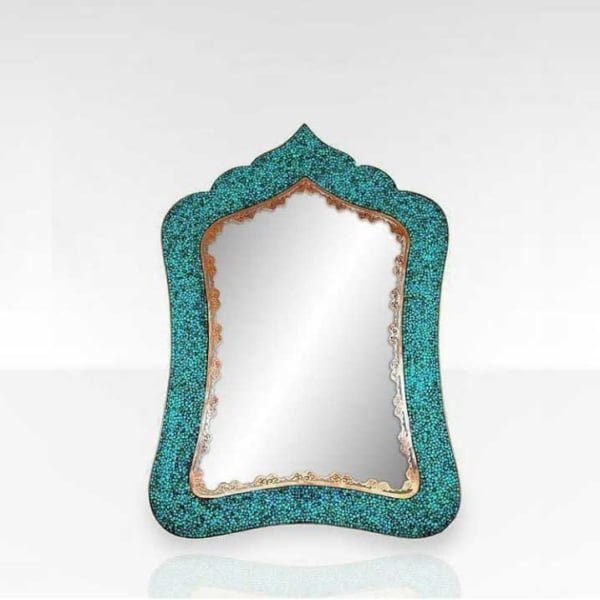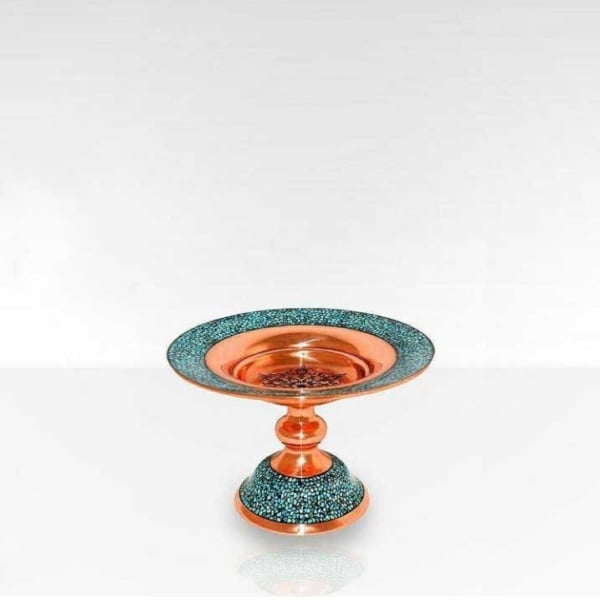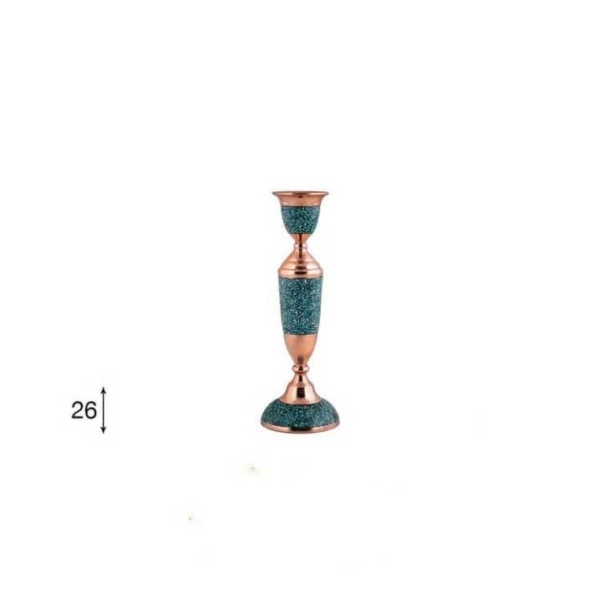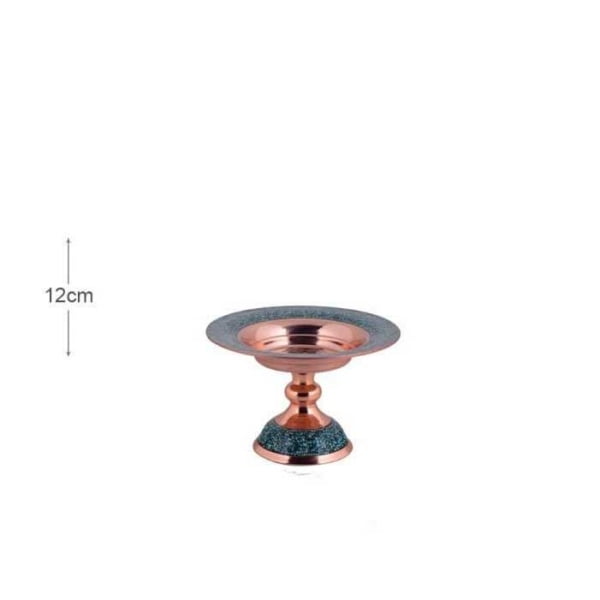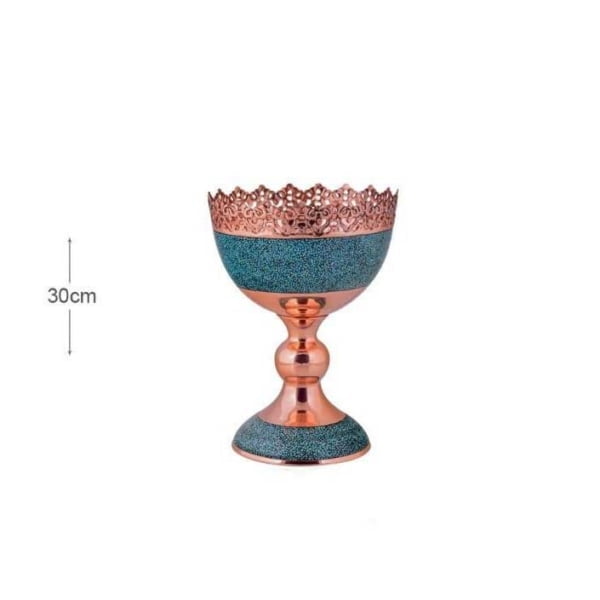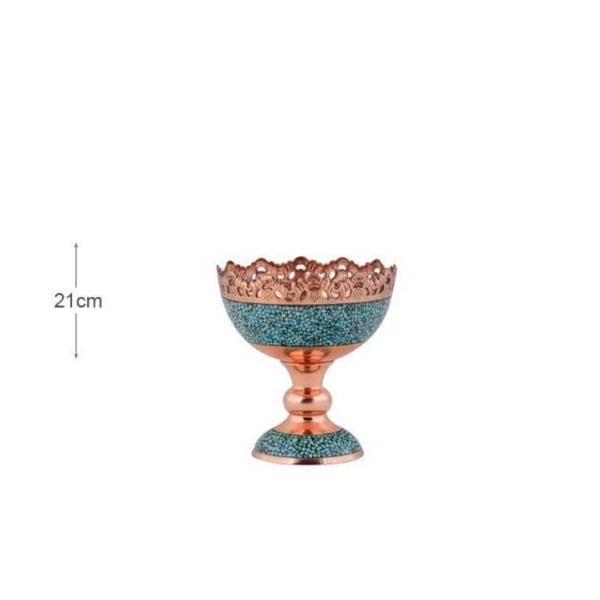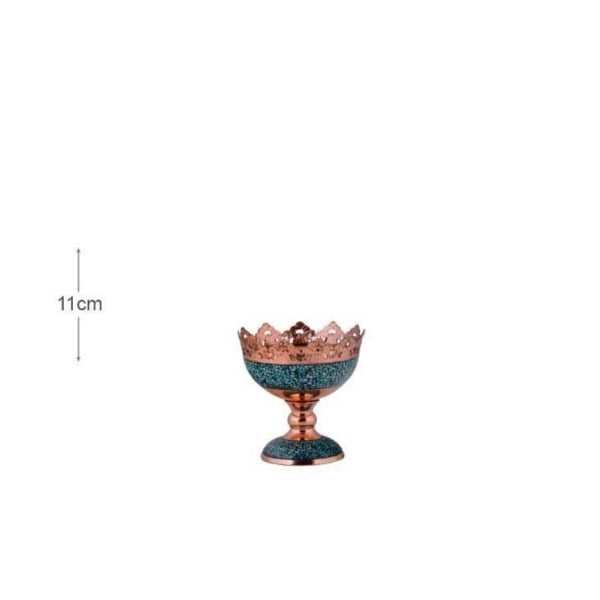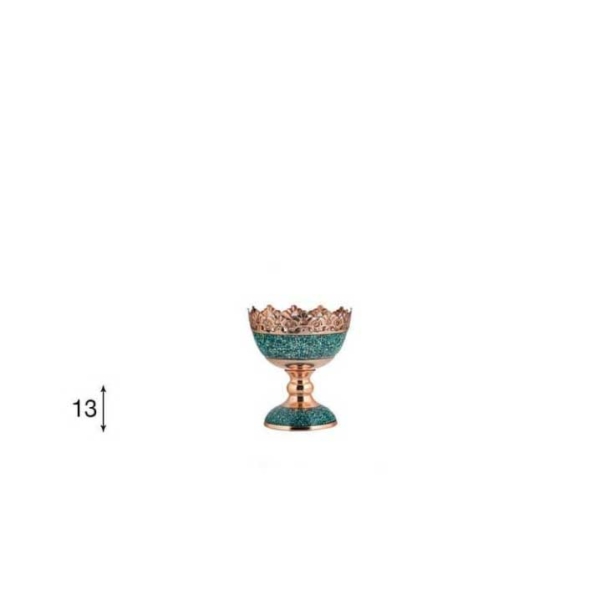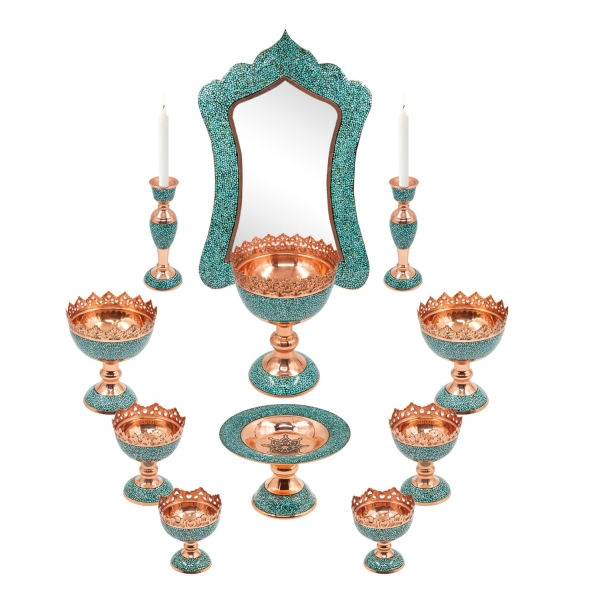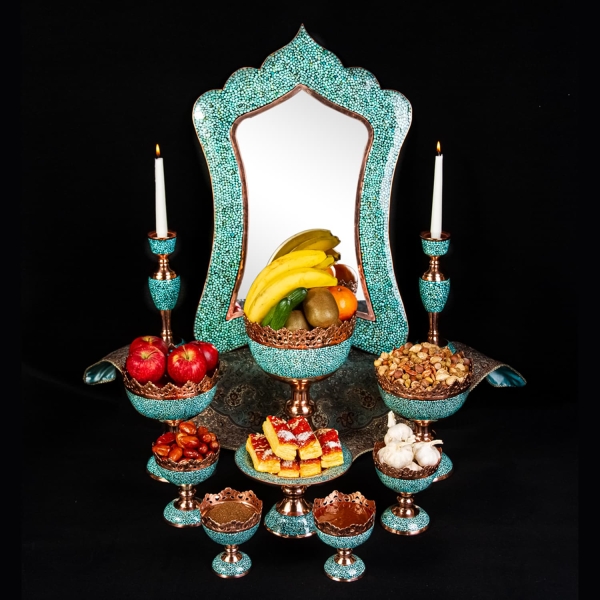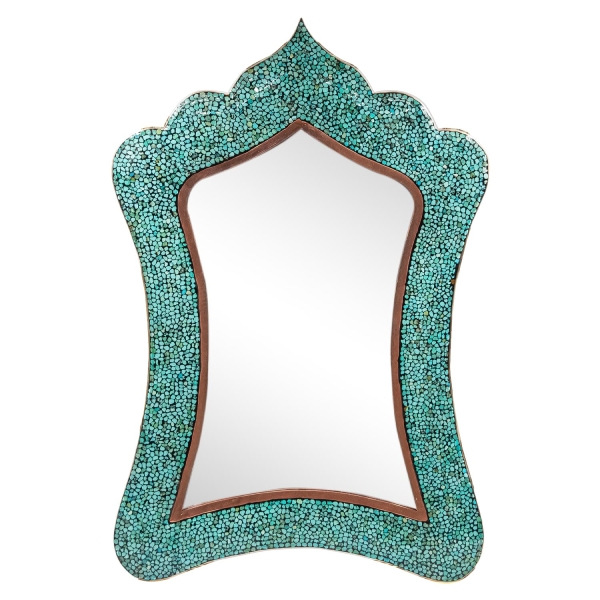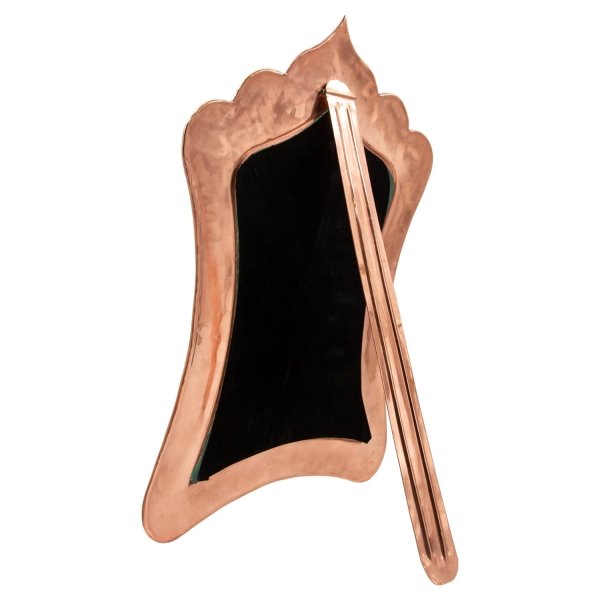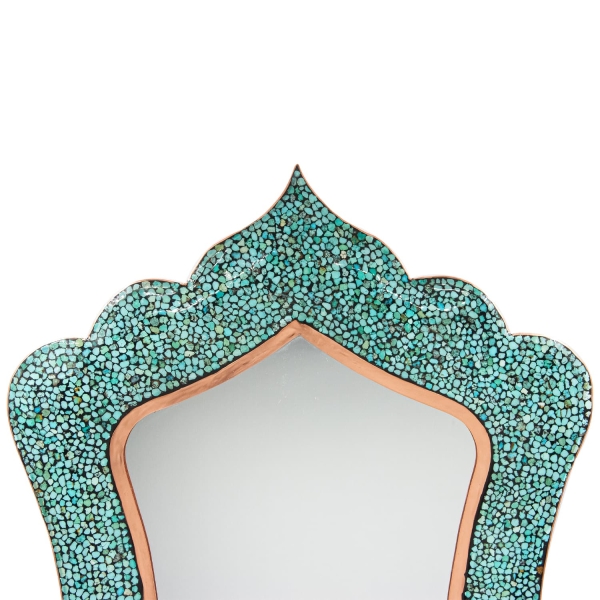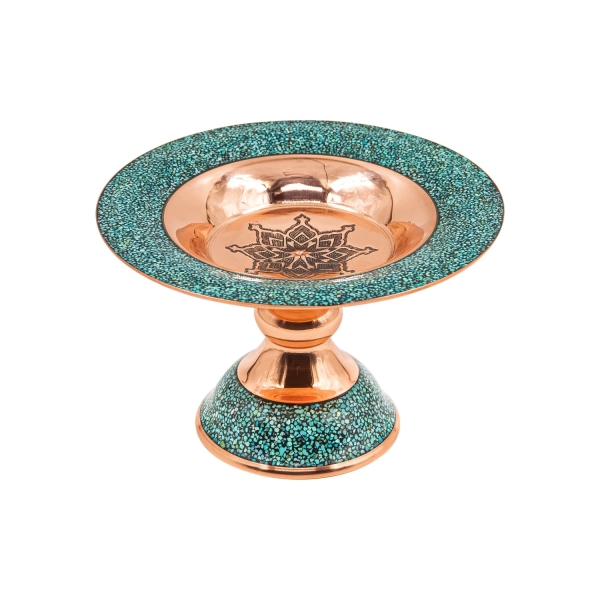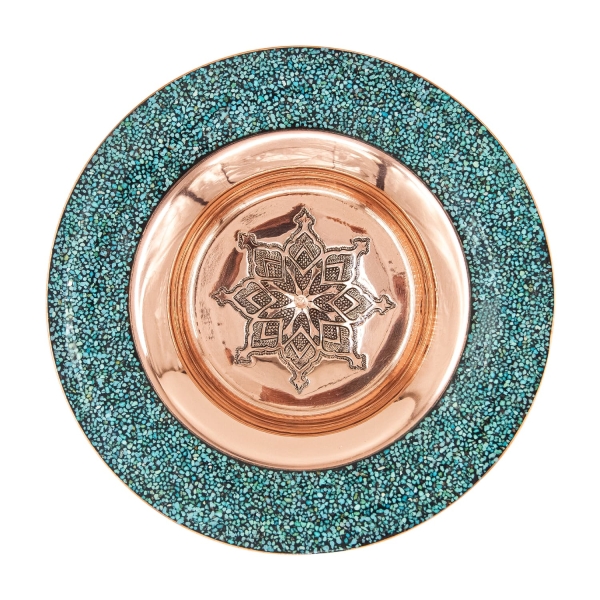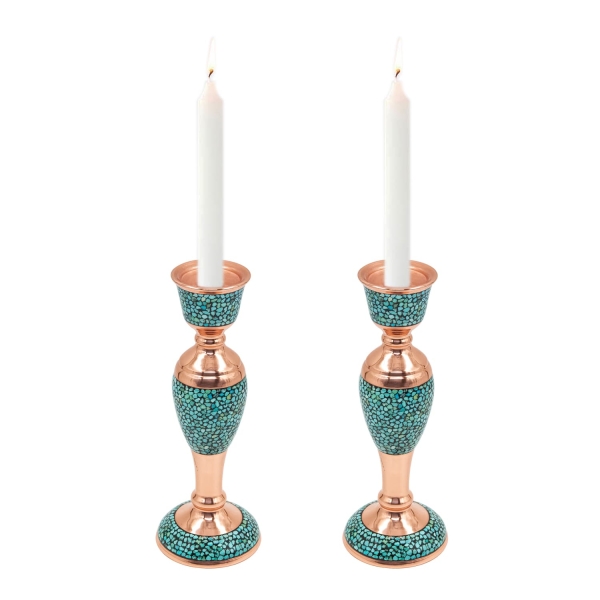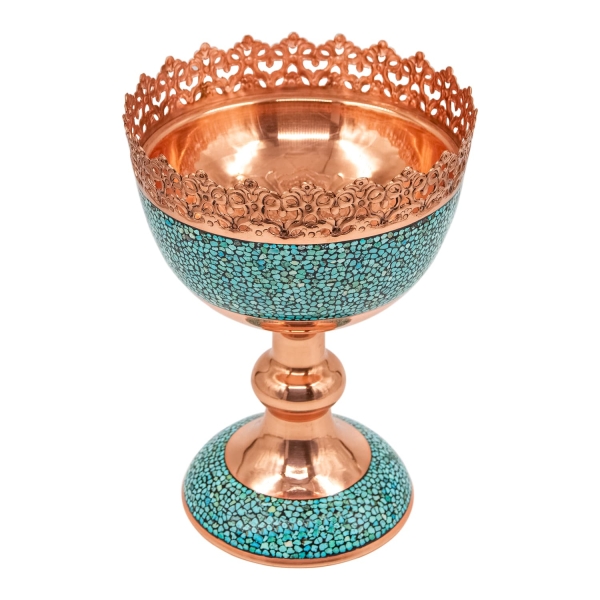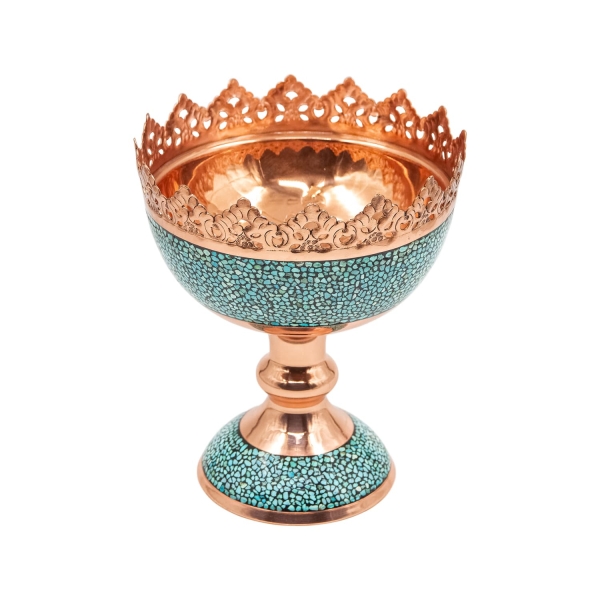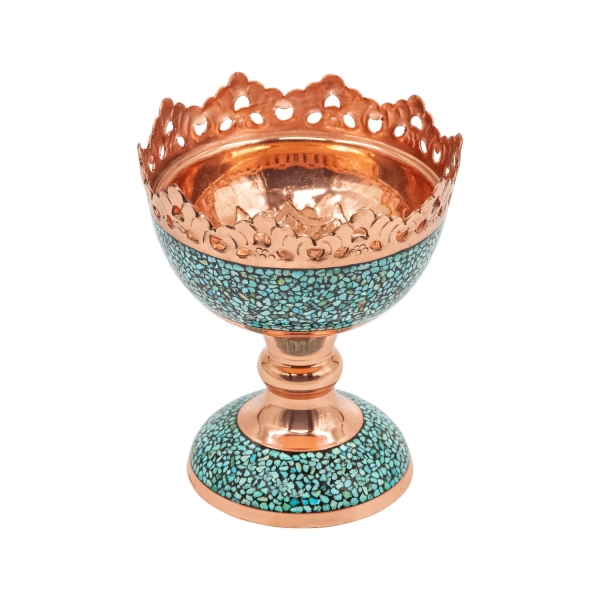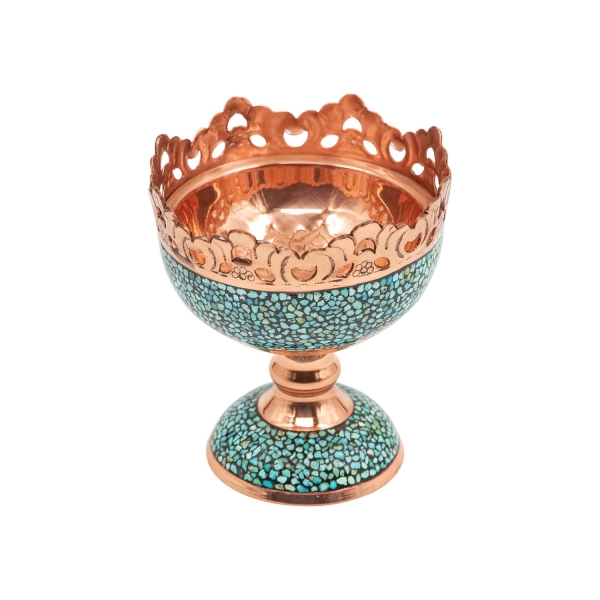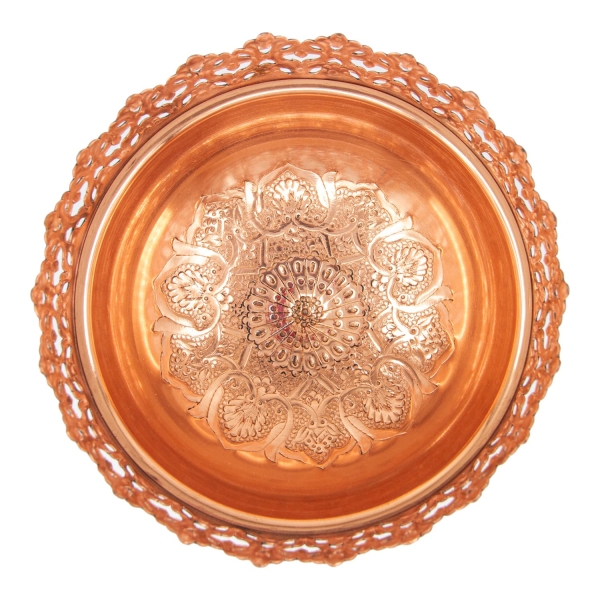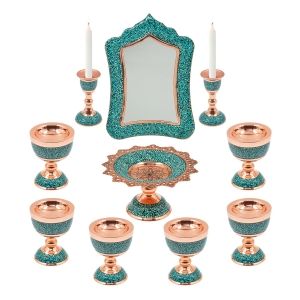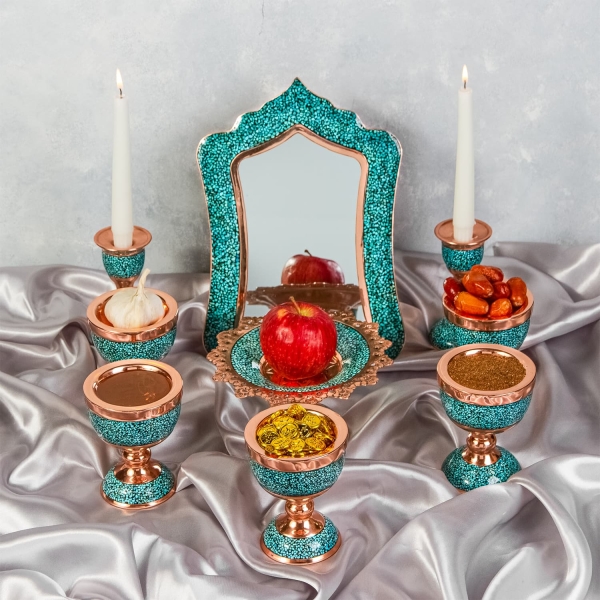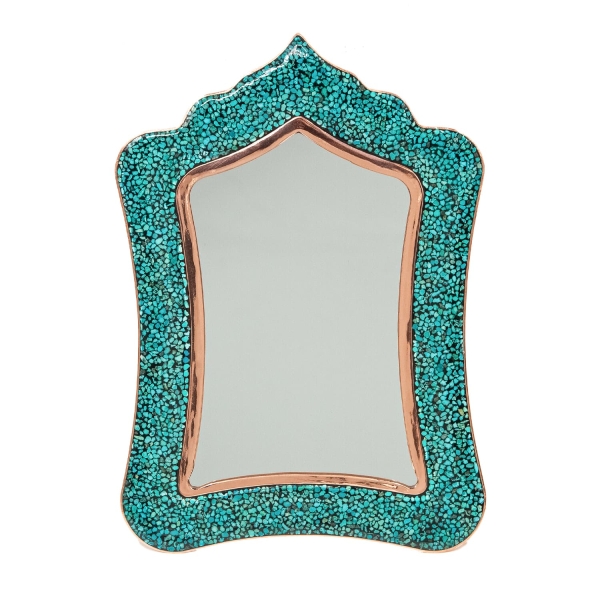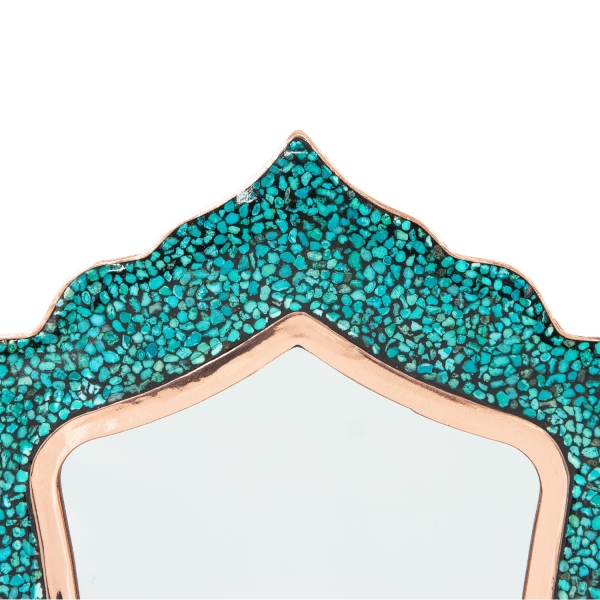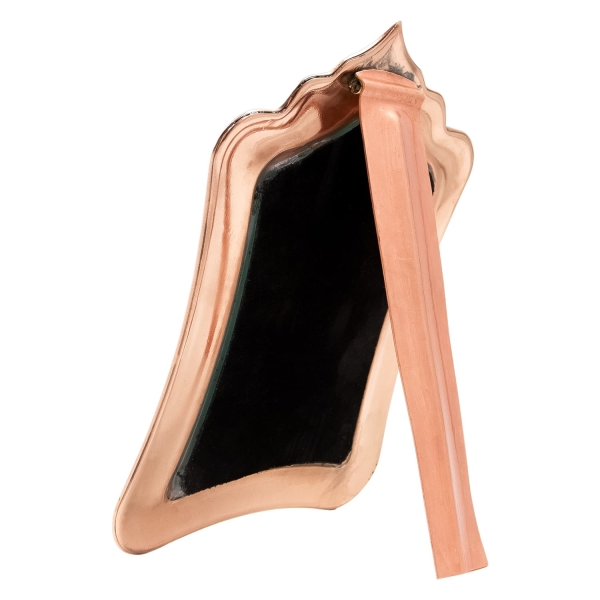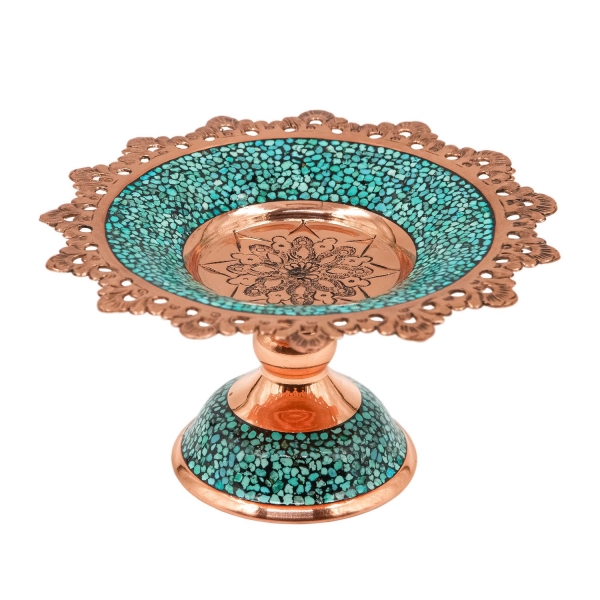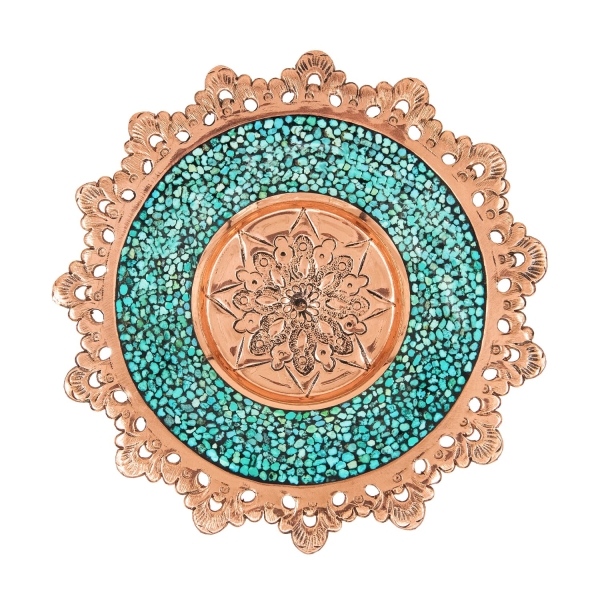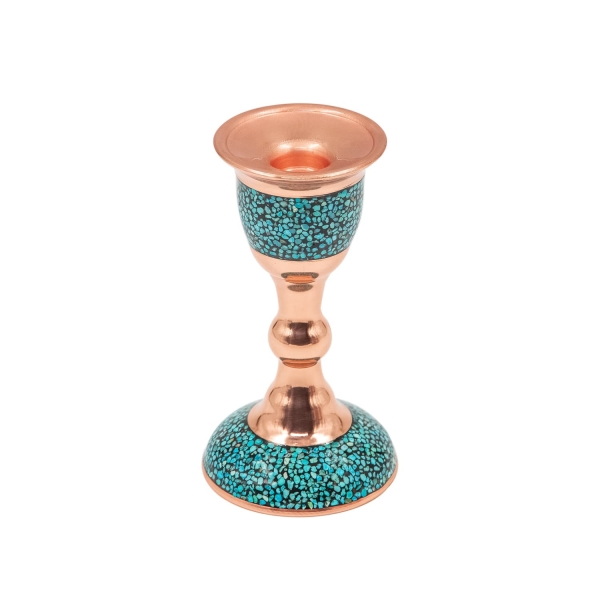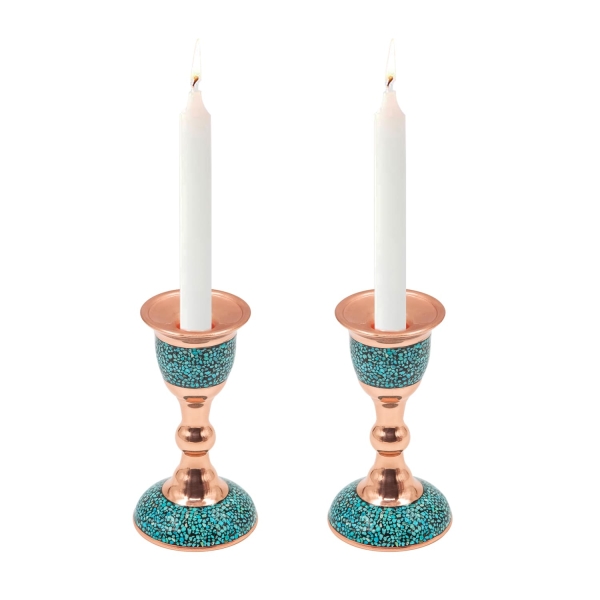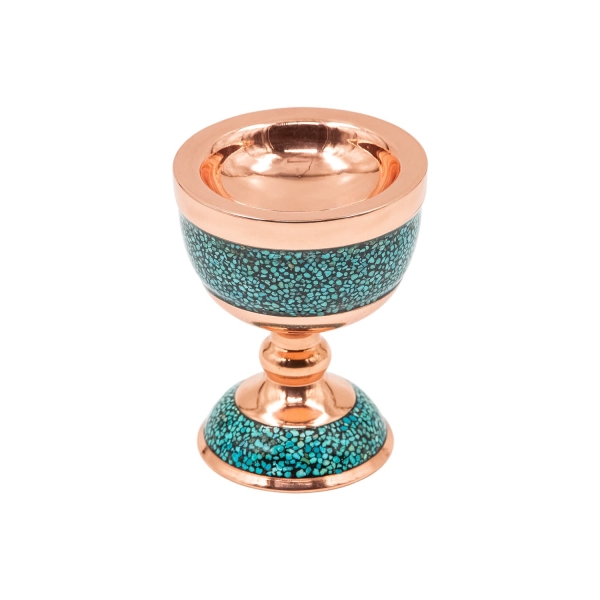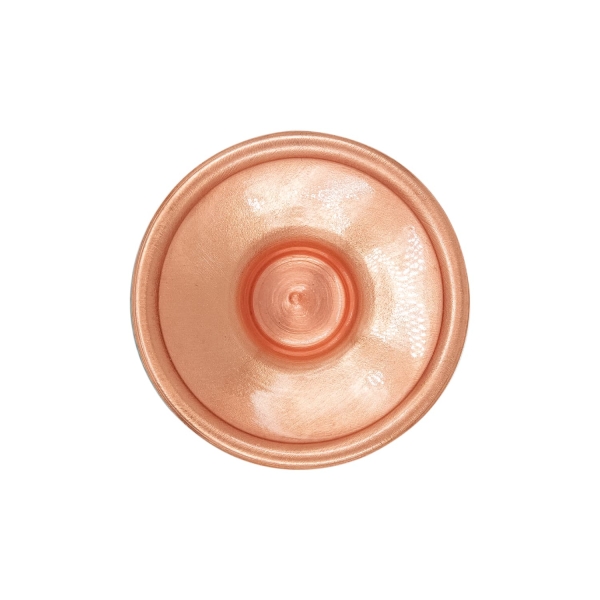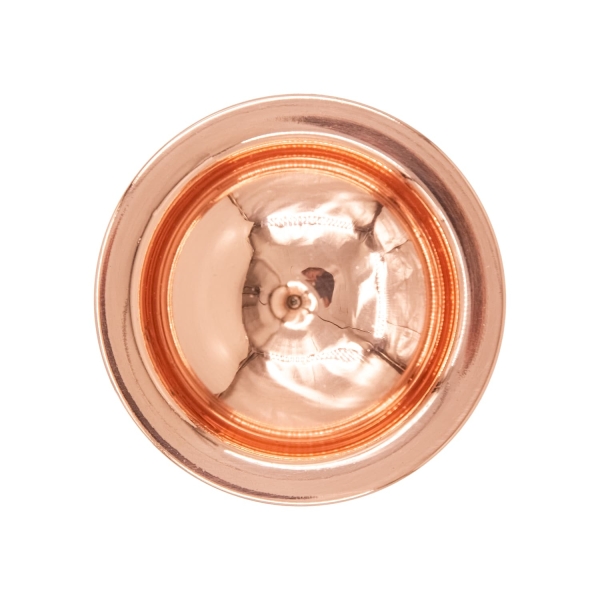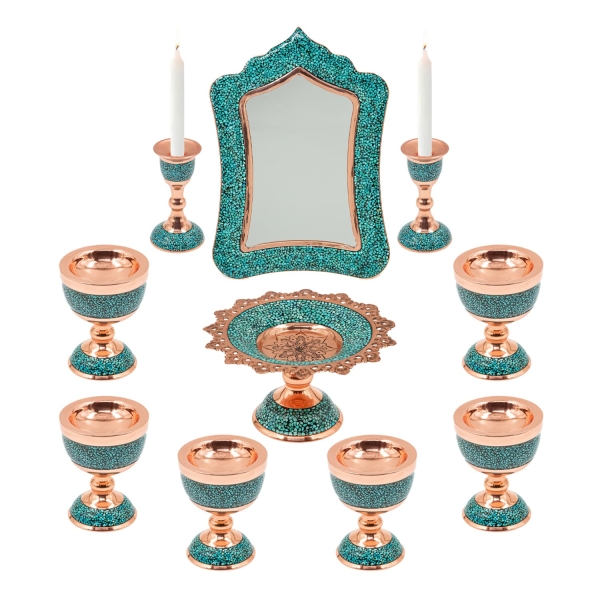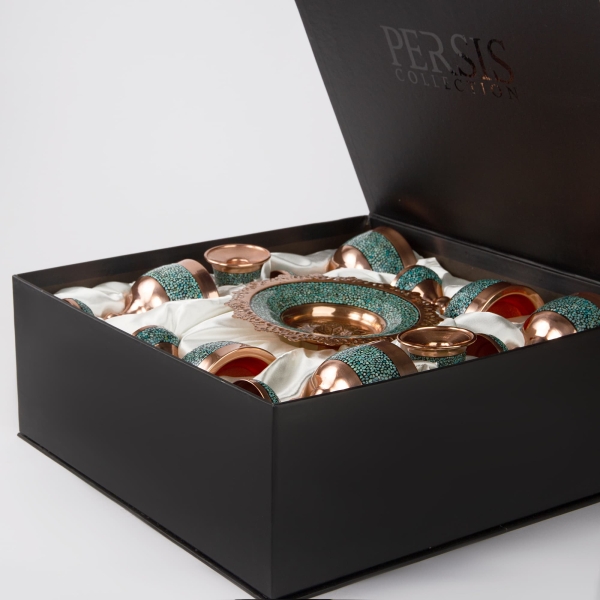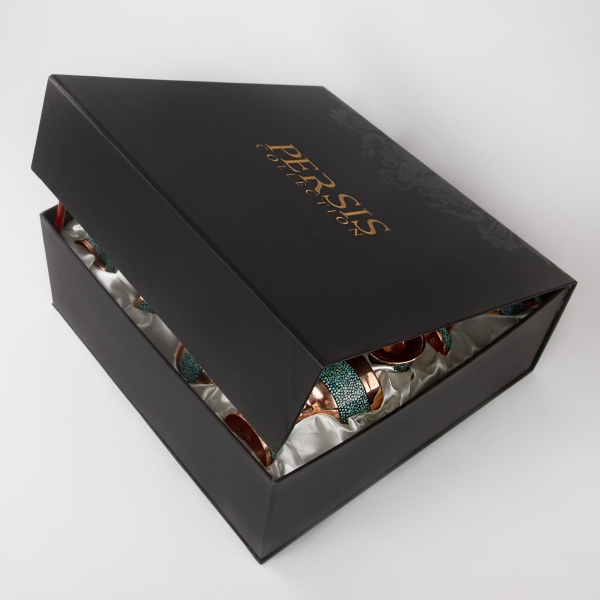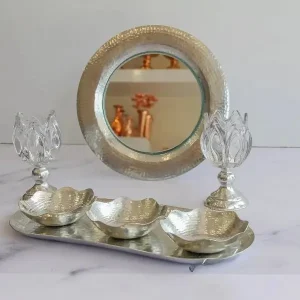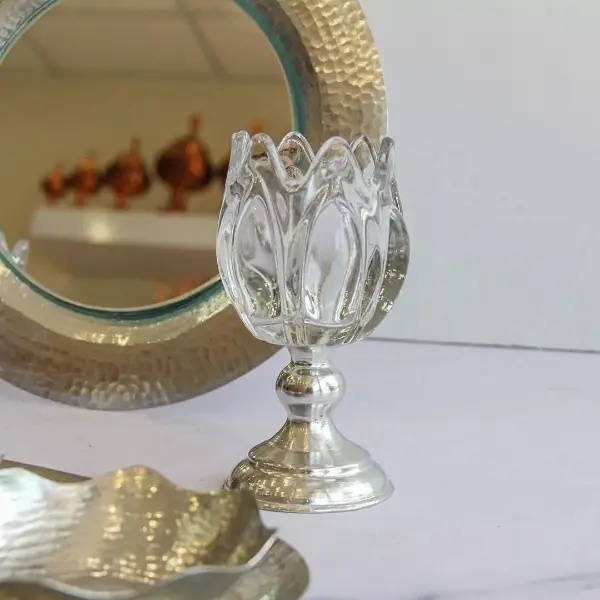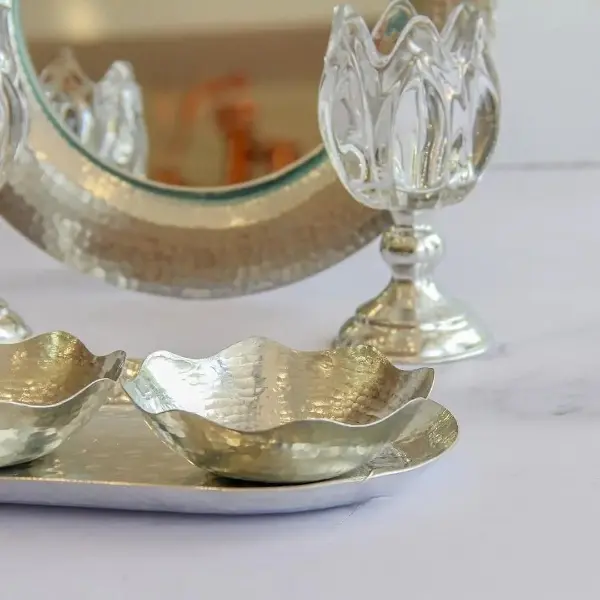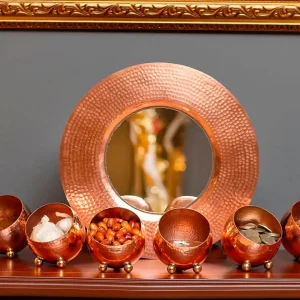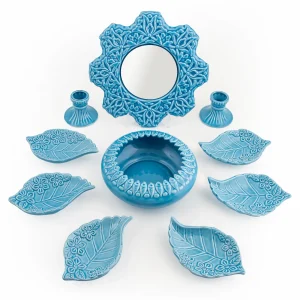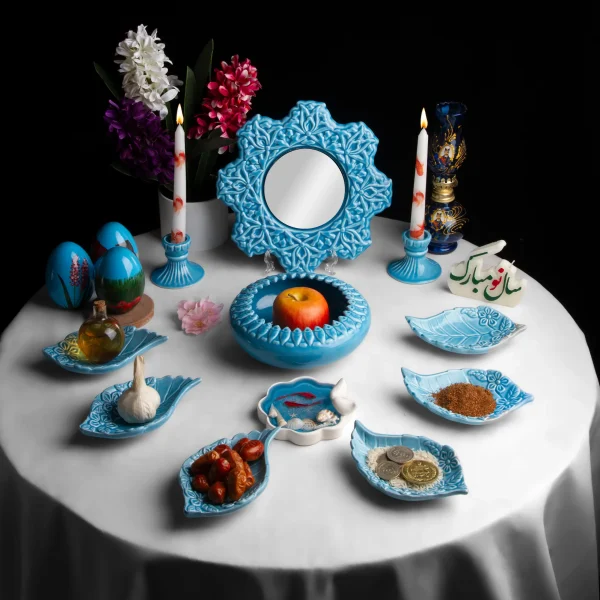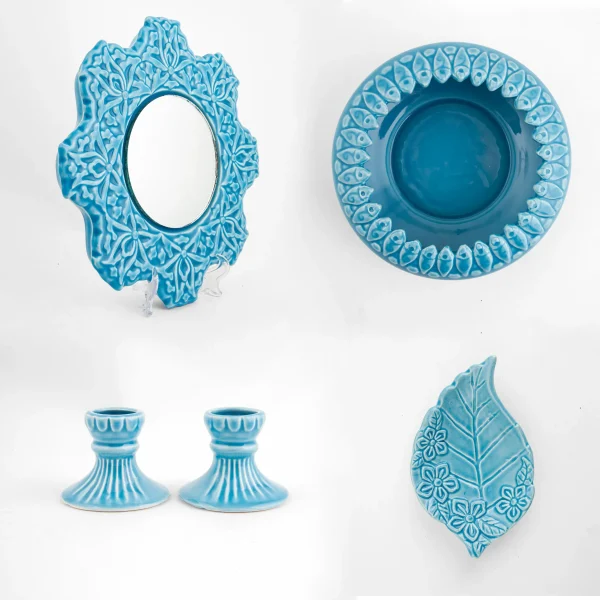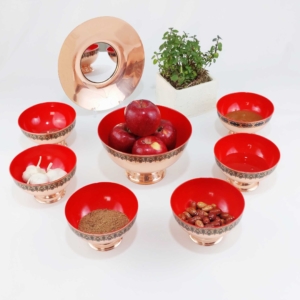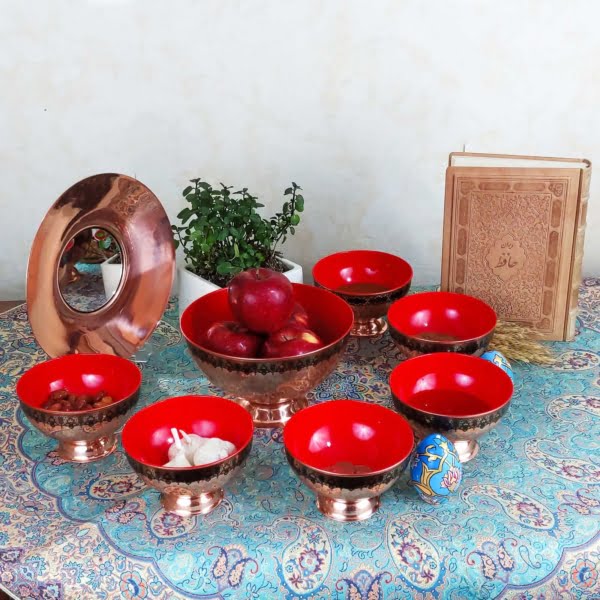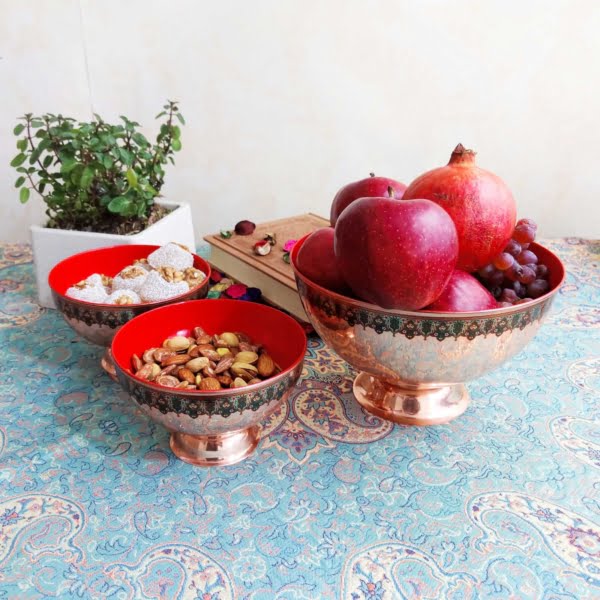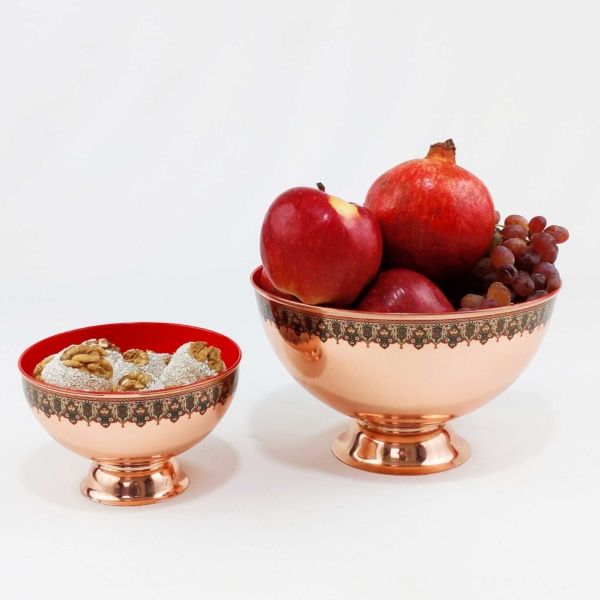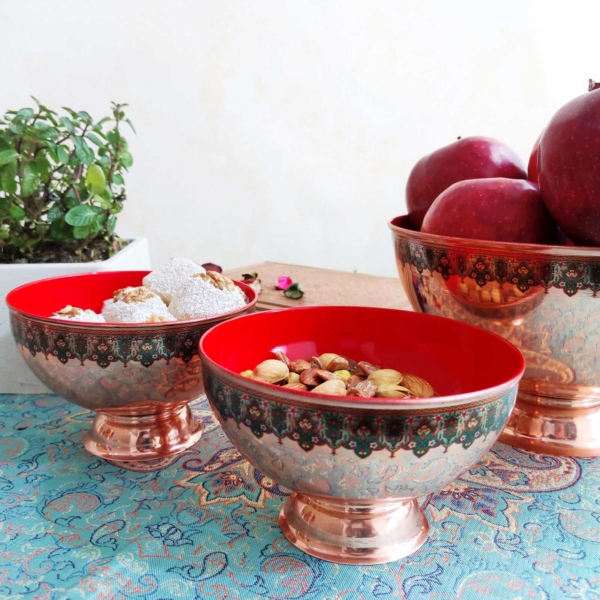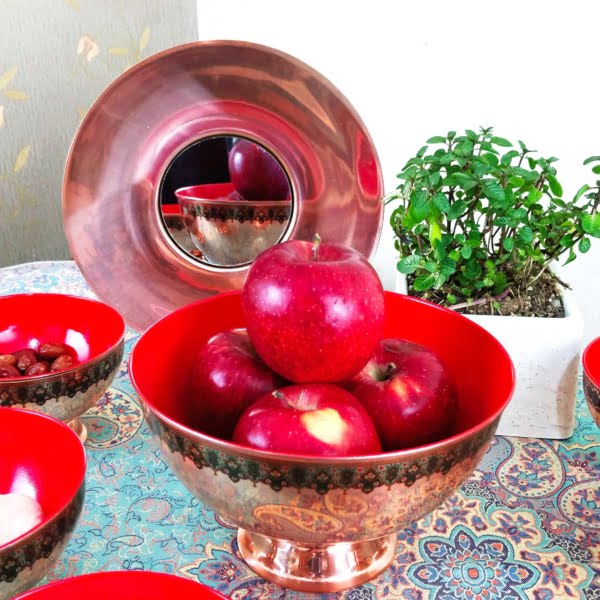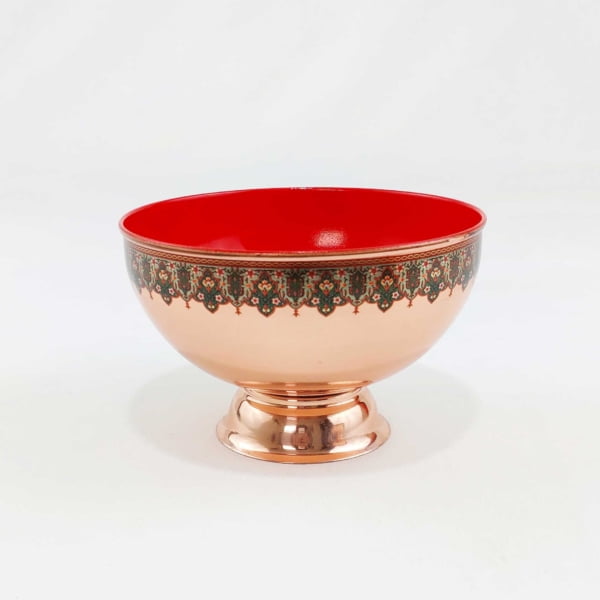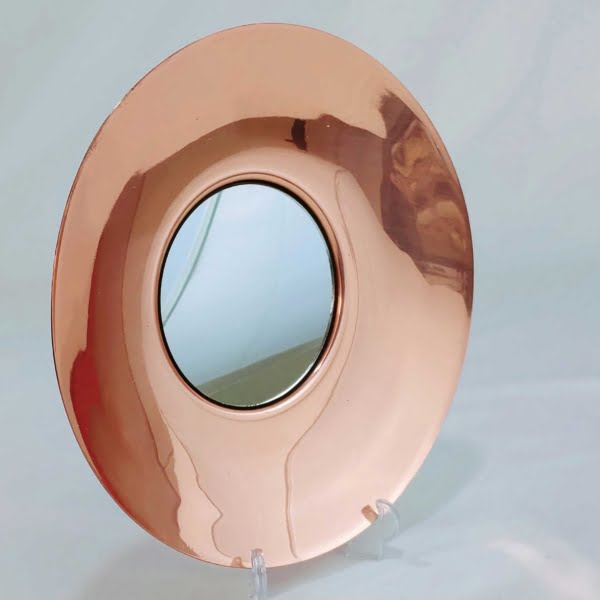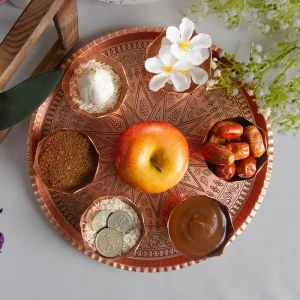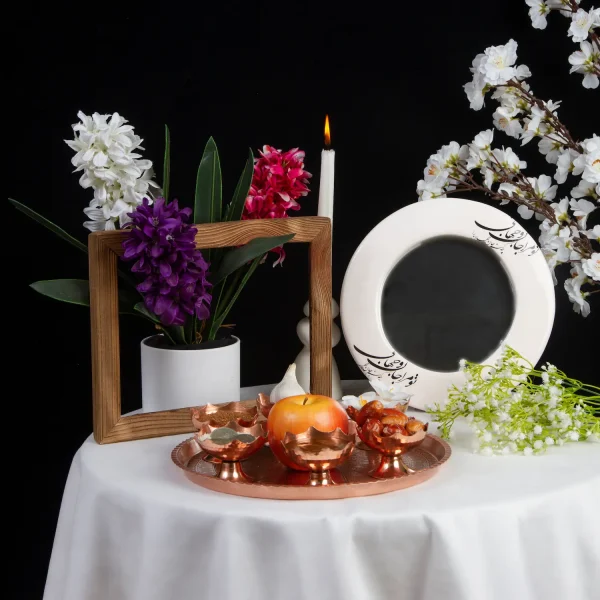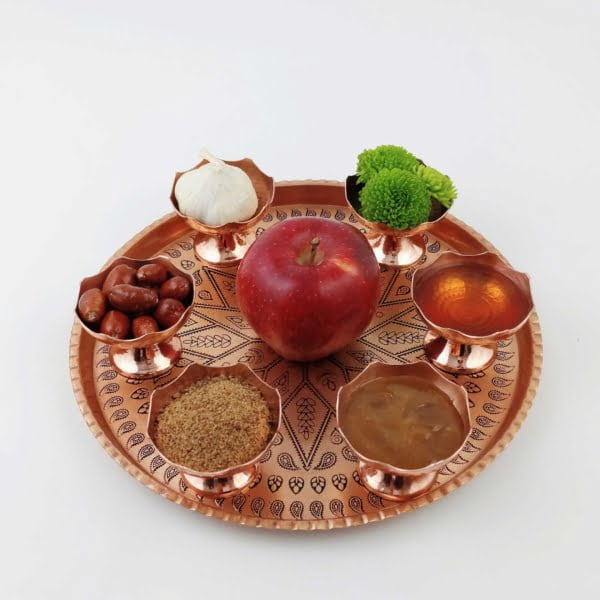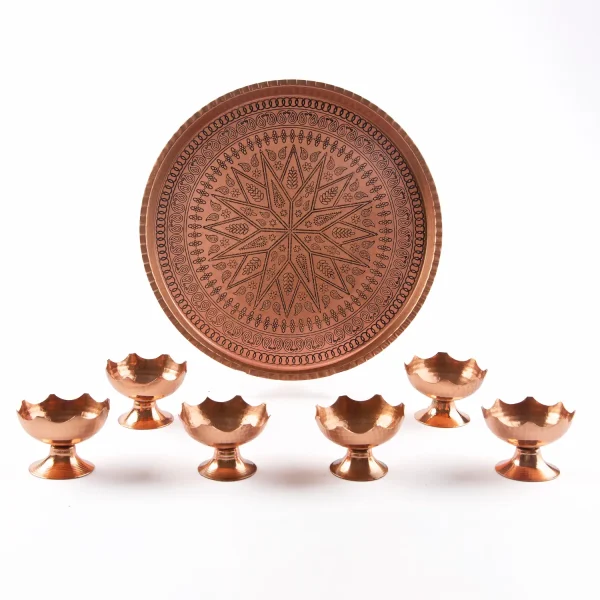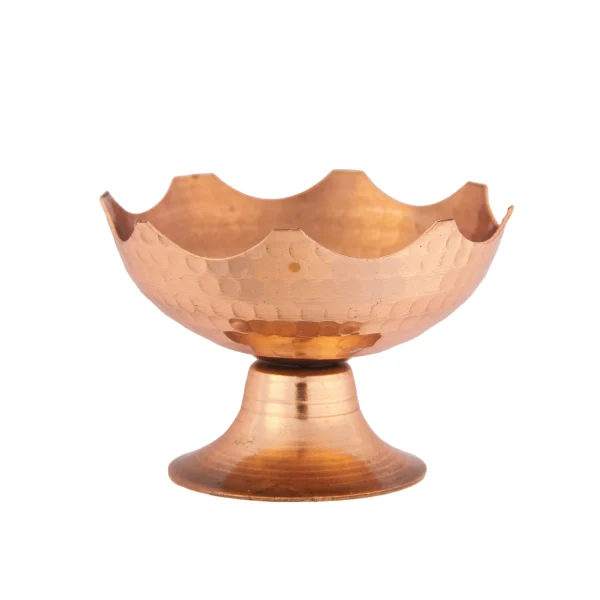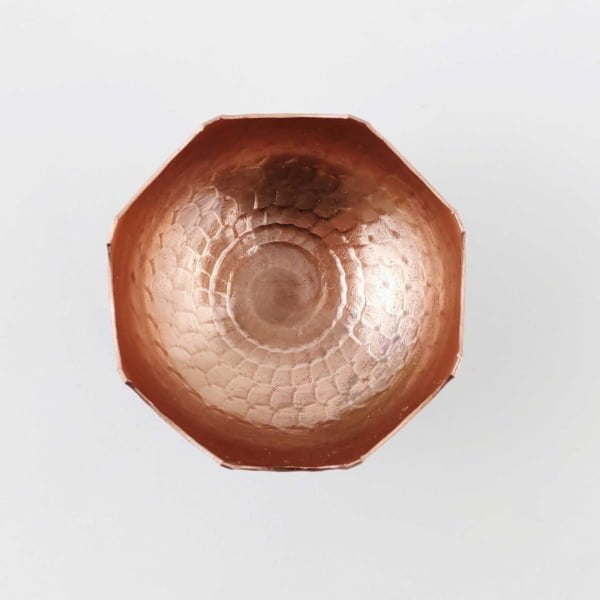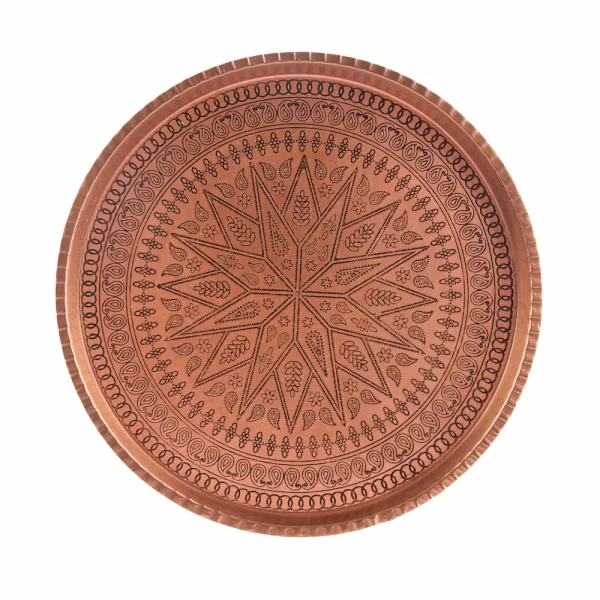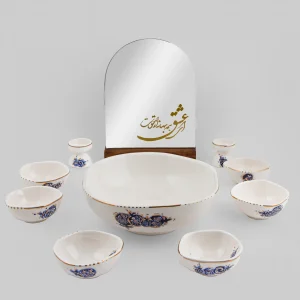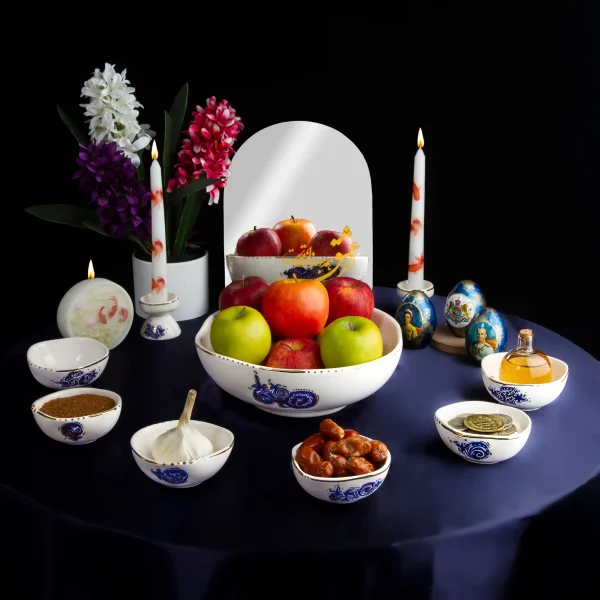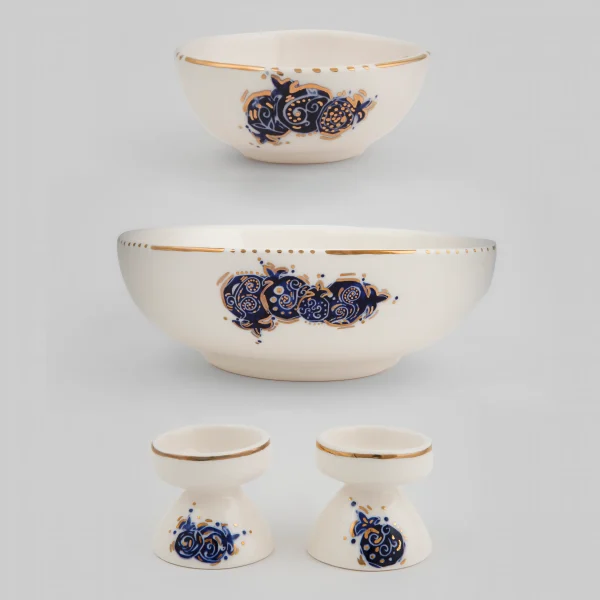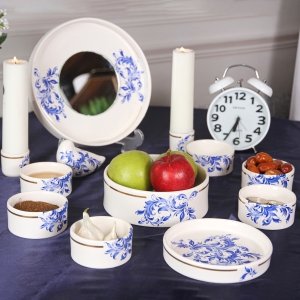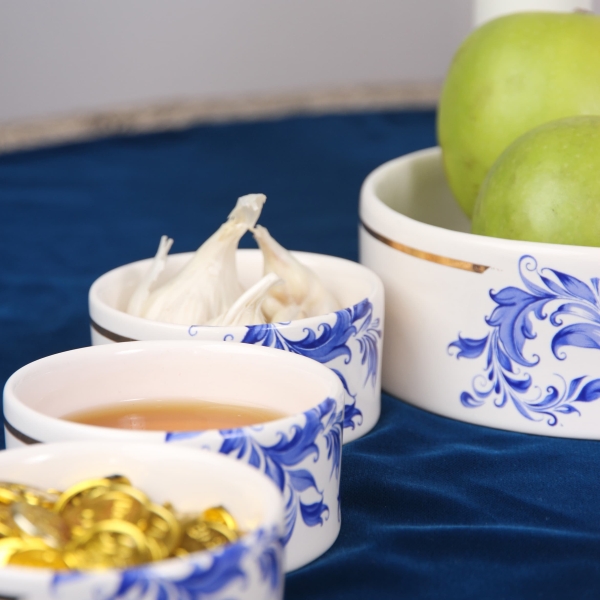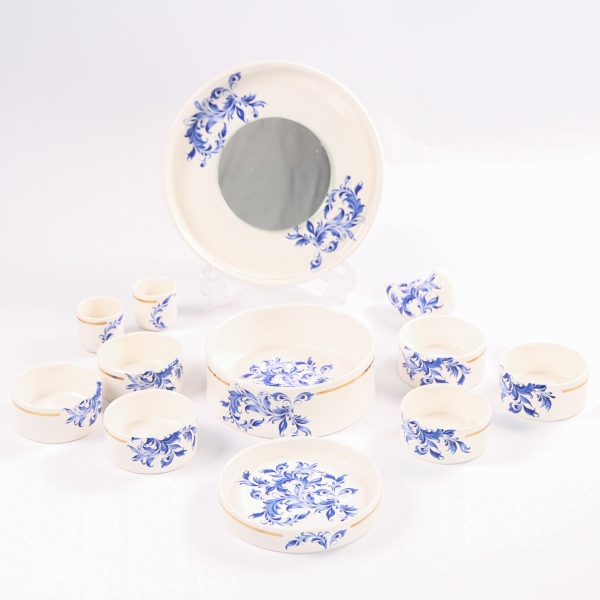Haft Seen Set
Discover the rich cultural heritage of Persian art through our stunning collection of Haft Seen Sets, perfect for celebrating Nowruz. From traditional turquoise inlay to calligraphy designs., and meaning to your Persian New Year table.
The Art of Persian Calligraphy in Haft Seen Sets: Elevating Your Nowruz Table
The Haft Seen table plays a significant role in the Persian New Year (Nowruz) celebration, a symbol of renewal and a way to welcome prosperity, health, and happiness into the new year. For centuries, families have meticulously designed and arranged their Haft Seen sets, blending art with tradition. Persian artisans have taken this tradition further, creating beautiful and unique Haft Seen sets that are not only symbolic but also works of art. These sets come in various styles, from ancient crafts like turquoise inlay to intricate enamel work and modern calligraphy-inspired designs. Each set reflects a part of Iranian heritage and offers families a chance to express their tastes through the elegance of their Nowruz table.
The Traditional Elements of the Haft Seen Table
At the heart of any Haft Seen table are the seven items that start with the Persian letter “S” (Sin). These items are not just random selections but carry deep symbolic meaning. Sabzeh, or sprouted grains, symbolize rebirth and growth, while senjed (dried oleaster fruit) represents love. Seeb (apple) stands for health, serkeh (vinegar) symbolizes patience, samanu (sweet wheat pudding) represents power and strength, seer (garlic) reflects protection, and somāq (sumac) signifies the triumph of light over darkness.
Each family arranges these items on a beautifully decorated table, often accompanied by other symbols of good fortune, such as a mirror, candles, painted eggs, goldfish, and a holy book or poetry. The Haft Seen table has become more than just a traditional setting; it has transformed into a canvas for artistic and cultural expression, with families choosing specific Haft Seen sets that reflect their styles and honor their heritage.
The Cultural Importance of Haft Seen Sets
Historical Roots of the Haft Seen Tradition
The Haft Seen tradition dates back thousands of years, originating in ancient Persia as part of the Zoroastrian New Year celebration. Over the centuries, the symbolic meaning of the Haft Seen items has evolved, but the central theme of renewal and rebirth remains constant. The seven “S” items are carefully chosen to represent virtues that the family hopes to cultivate in the new year, such as patience, health, and love.
Modern Haft Seen sets not only carry this historical significance but also showcase the craftsmanship and artistry of Persian culture. By incorporating decorative elements like turquoise inlay, enamel, or calligraphy, these sets have become an integral part of the Nowruz celebration, blending tradition with contemporary artistic expression.
Choosing the Right Haft-Seen Set for Your Home
Selecting the right Haft Seen set is a deeply personal decision. Some families opt for traditional designs that honor their heritage, while others choose modern sets that align with their contemporary lifestyle. At the Persis Collection, we offer a wide range of Haft Seen sets, including turquoise inlay sets, luxury enamel designs, and calligraphy-inspired pieces. Each of these styles reflects different aspects of Persian culture and allows you to create a unique and beautiful Haft Seen table that suits your taste.
Exploring Different Types of Haft-Seen Sets
Turquoise Inlay Haft Seen Sets: Timeless Elegance
Turquoise inlay is one of the most famous and revered forms of Persian art, dating back to ancient times. This technique, known as Firoozeh Koobi, involves embedding small pieces of turquoise stone into the surface of objects made from copper, brass, or silver. A turquoise inlay Haft Seen set offers a perfect blend of historical craftsmanship and modern elegance, adding a vibrant splash of color to your Nowruz table.
The serene blue hue of the turquoise symbolizes peace and prosperity, making it a fitting addition to the Haft Seen arrangement. These sets typically include dishes, candlesticks, and mirrors, all adorned with intricate turquoise inlay designs. The craftsmanship involved in creating these sets ensures that each piece is unique, turning the Haft Seen table into a focal point of beauty and tradition. Turquoise inlay Haft Seen sets are perfect for those who want to combine luxury with cultural significance.
Luxury Enamel Haft Seen Sets: A Splash of Color and Detail
Enamel work, or minakari, is another ancient Persian art form that has been used to decorate Haft Seen sets for generations. Enamel Haft Seen sets are known for their vibrant colors and detailed designs, which often feature intricate floral patterns or geometric motifs. These sets are typically crafted from copper or brass and are hand-painted by skilled artisans.
The beauty of a luxury enamel Haft Seen set lies in its ability to elevate the traditional Haft Seen table with bold colors and timeless designs. The pieces in these sets, such as dishes, vases, and mirrors, are often painted in shades of blue, red, and gold, making them a striking addition to any Nowruz table. These sets are perfect for families who want their Haft Seen table to reflect a sense of grandeur and artistic sophistication.
Calligraphy-Inspired Haft Seen Sets: Art Meets Spirituality
Persian calligraphy holds a special place in Iranian art and culture. It has been used for centuries to adorn manuscripts, poetry, and architecture. In recent years, calligraphy has made its way into Haft Seen designs, where beautifully inscribed verses from Persian poetry or the Quran add a spiritual dimension to the Haft Seen table.
A calligraphy-inspired Haft Seen set offers a unique combination of visual beauty and profound meaning. These sets often feature dishes and decorative pieces inscribed with uplifting quotes, prayers for the new year, or verses that reflect the themes of renewal and rebirth. For families who want their Haft Seen table to serve not only as a celebration of Nowruz but also as a moment of reflection and spiritual connection, these calligraphy sets provide the perfect balance of art and meaning.
Modern Haft Seen Table Design Ideas
Minimalist Haft Seen Table for a Contemporary Look
In recent years, many families have embraced minimalist designs for their Haft Seen tables. By focusing on clean lines, sleek materials, and neutral color palettes, a minimalist Haft Seen table offers a modern take on the traditional display. Glass or wooden dishes, paired with simple floral arrangements and soft candlelight, create an understated yet elegant look that emphasizes the symbolism of the Haft Seen items without overwhelming the table.
This modern approach allows for more flexibility in terms of table decorations. You can choose a few key pieces, such as a custom mirror or hand-painted eggs, to add personal touches to the table. This minimalist style is perfect for those who prefer a more contemporary aesthetic while still honoring the core elements of the Nowruz tradition.
Bold Colors and Floral Themes for a Festive Atmosphere
For families who want their Haft Seen table to be a vibrant celebration of spring and renewal, incorporating bold colors and floral arrangements is a popular option. Brightly colored dishes, decorative vases filled with hyacinths or tulips, and colorful hand-painted eggs bring the table to life and evoke the spirit of the new year.
Floral patterns can also be integrated into the design of the Haft Seen set itself, particularly with enamel work, where artisans often paint detailed floral motifs onto the dishes and other items. This approach creates a festive and lively atmosphere, perfect for welcoming guests and family members to your Nowruz celebration.
Purchasing the Perfect Haft Seen Set for Your Celebration
At Persis Collection, we take pride in offering a wide selection of Haft Seen sets for sale, ranging from traditional turquoise inlay to modern calligraphy-inspired designs. Each of our sets is crafted by skilled artisans, ensuring high quality and uniqueness. We provide worldwide delivery, making it easy to share the joy and beauty of Nowruz with your loved ones, no matter where they are.
When purchasing a Haft Seen set, consider not only the aesthetic appeal but also the cultural significance that the set represents. Whether you’re looking for a luxurious set to pass down as a family heirloom or a modern design to match your contemporary home, you’ll find the perfect option in our collection.
Haft Seen Set FAQs:
- What is a Haft Seen set?
A Haft Seen set is a traditional arrangement of symbolic items for Nowruz, the Persian New Year. The table includes seven items that begin with the letter “S” in Persian, symbolizing renewal, health, prosperity, and happiness. - What items are included in a Haft Seen set?
A Haft Seen set includes sabzeh, seeb, senjed, serkeh, samanu, seer, and somāq, along with items like a mirror, candles, colored eggs, and a goldfish. - Can I buy a Haft Seen set online?
Yes, you can purchase a wide variety of Haft Seen sets from Persis Collection, including traditional, luxury, and modern designs. We offer worldwide delivery. - What is the meaning behind the items on the Haft Seen table?
Each item on the Haft Seen table symbolizes different virtues such as rebirth, love, health, patience, prosperity, and light. - What is the significance of the mirror on the Haft Seen table?
The mirror represents self-reflection and clarity, serving as a reminder of introspection and self-awareness in the new year. - How do I decorate a Haft Seen table?
You can decorate a Haft Seen table with floral arrangements, candles, and symbolic items, using a mix of modern and traditional elements for a unique look. - What are calligraphy-inspired Haft Seen sets?
Calligraphy-inspired Haft Seen sets feature beautiful Persian calligraphy, often including poetic verses or prayers, adding a spiritual and artistic touch to the table. - Can I personalize my Haft Seen set?
Yes, many families personalize their Haft Seen sets with custom decorations, colors, and additional items to reflect their unique style. - Where can I find luxury Haft Seen sets?
Persis Collection offers a wide selection of luxury Haft Seen sets, including enamel and turquoise inlay designs that are crafted by skilled artisans. - What is the history of the Haft Seen tradition?
The Haft Seen table has been a central part of Nowruz celebrations for centuries, symbolizing the arrival of spring and the renewal of life, dating back to ancient Persia.






